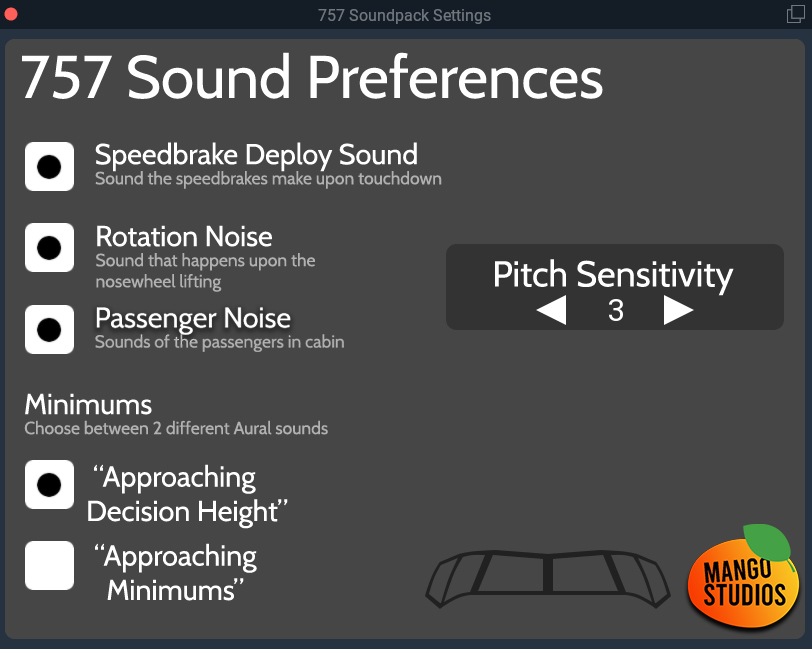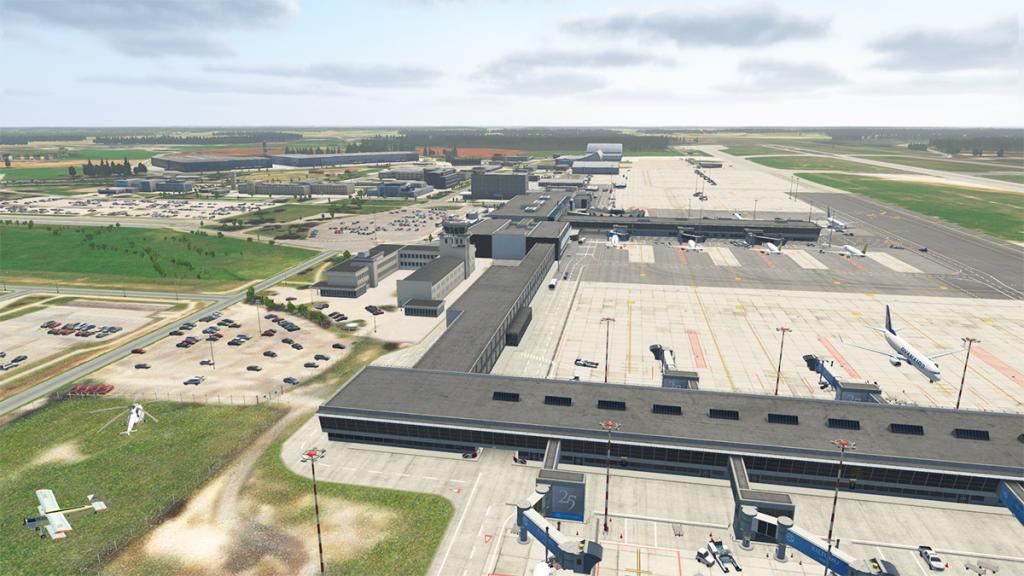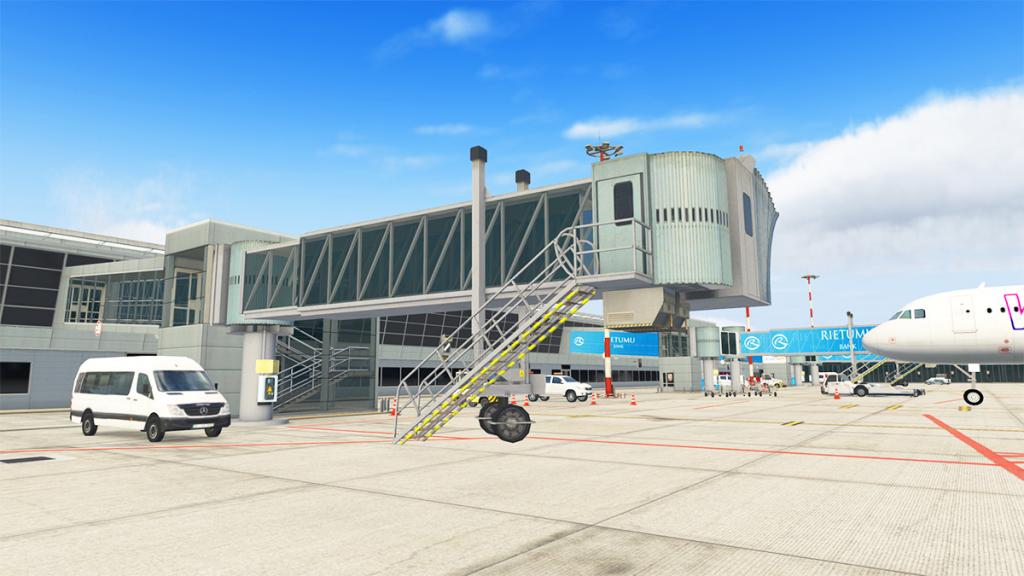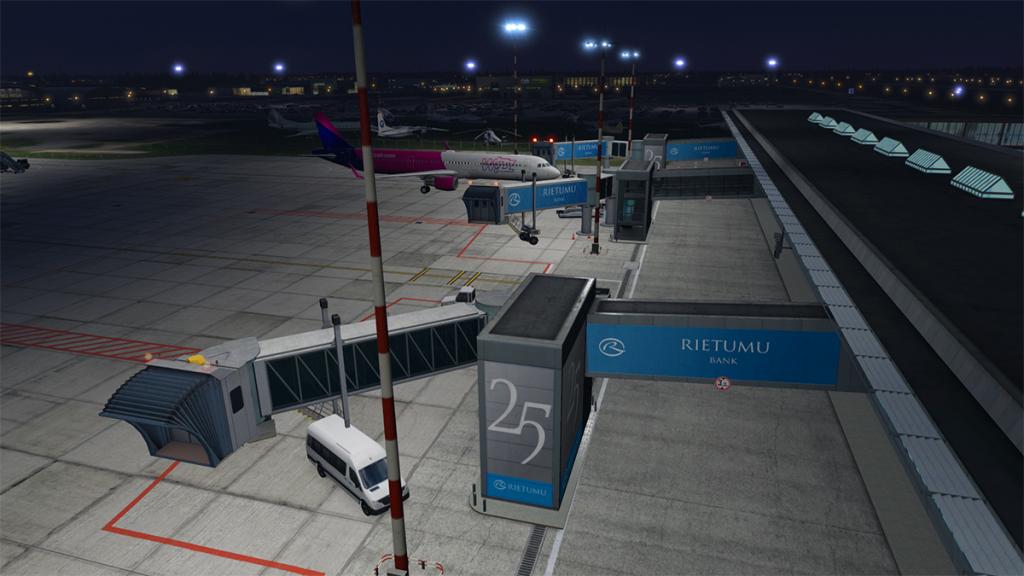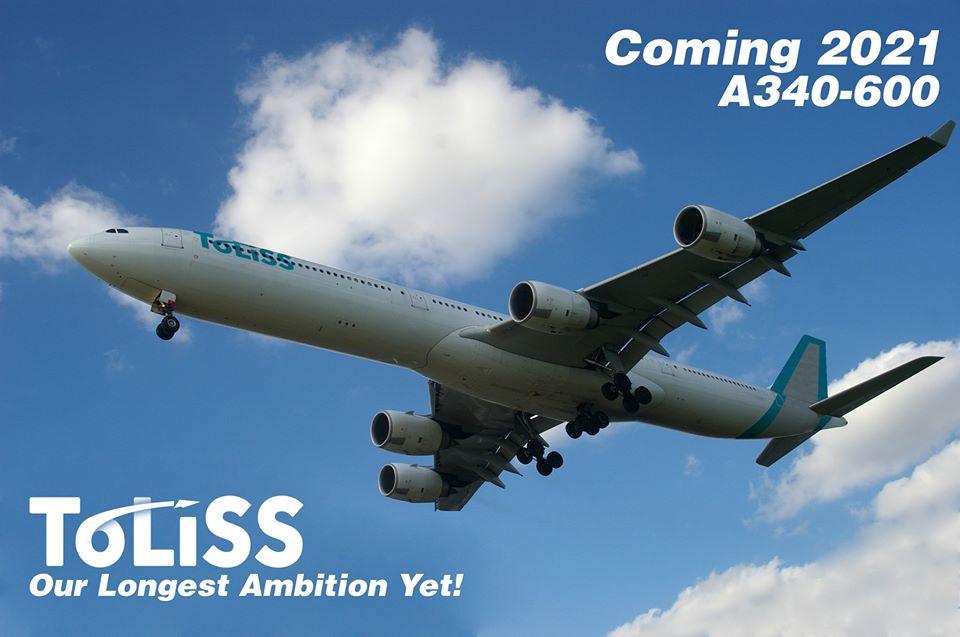-
Posts
2734 -
Joined
-
Last visited
-
Days Won
355
Content Type
Profiles
Forums
Articles
Everything posted by Stephen
-
News! - Scenery Release : Airport Madrid XP by Aerosoft The brand name on the packaging maybe Aerosoft, but this is all a Windsock Productions in a partnership with Sim-Wings, it is noted that this Madrid Barajas International Airport for X-Plane 11 scenery is a conversion of the Sim-Wing's Madrid International for the Prepar3D platform. Sim-wings presents the Airport Madrid with all buildings and service facilities for X-Plane 11. The aerial image covers a total surface of 400 km², and the detailed 3D models and animations bring the scenery to life. Given it's full title... Adolfo Suárez Madrid–Barajas Airport is commonly known as Madrid–Barajas Airport, is the main international airport serving Madrid in Spain. At 3,050 ha (7,500 acres) in area, it is the second-largest airport in Europe by physical size behind Paris–Charles de Gaulle Airport. In 2019, 61.8 million passengers travelled through Madrid–Barajas, making it the country's busiest airport as well as Europe's sixth-busiest. Features: Airport Madrid-Barajas with all buildings and service facilities Aerial image for the airport and its close environment (total of 400 km²) Autogen buildings and vegetation for the entire aerial image area Detailed airport buildings, terminal 4 and terminal 4 satellite with interior equipment Detailed animated jetway models (using SAM plug-in) Detailed ground markings Dynamic lighting Custom Mesh (Ortho4XP patch included) Compatible with default AI Traffic and World Traffic 3 X-Plane has been at a significant loss with no reputable Madrid Barajas Airport to use in the simulator. The Biggest barrier to any developer is the complex web and lattice work design structure of the terminals and associated buildings. So finally that hole can now be filled with this Windsock/Sim-Wings release of LEMD. But to note that this Windsock Madrid scenery is not compatible with Spain UHD, a popular freeware addon. LEMD Madrid Barajas Airport images are all courtesy of Aerosoft __________________ Yes!... Airport Madrid XP by Aerosoft is Available from the X-Plane.Org Store here : Airport Madrid XP Price is US$27.99 Requirements X-Plane 11 Windows, Mac and Linux 4 GB VRAM Video Card - 8 GB+ VRAM Recommended Download Size: 2 GB Current version: 1.0 (April 20th 2021) ___________________________ News by Stephen Dutton 21st April 2021 Copyright©2021: X-Plane Reviews (Disclaimer. All images and text in this review are the work and property of X-PlaneReviews, no sharing or copy of the content is allowed without consent from the author as per copyright conditions) All Rights Reserved
-
News! - Update Revealed : ToLiss A319 V1.6 and A321 V1.3 updates Boom! Boom!... and they keep on coming. ToLiss have only just done a round of updates to their excellent A319 and A321 Airbus aircraft, have already announced the next set of updates in A319 v1.6 and A321 v1.3 ToLiss notes that at first these update features will be for the A319, then the same for the A321 with a couple of undisclosed NEO specific additions for the A321 NEO (New Engine Option) variants. Changes from build 1299 (V1.5.2) to build XXX (V1.6) Major new features: - Pilot item database allowing the creation and storage of custom waypoints, including associated page reconfigurations on DIR TO, FPLN, RAD NAV page etc. - Bleed system upgrade to a quantitative bleed model affecting fuel consumption and take-off thrust - Support for LDA, IGS, Localizer Backcourse and GLS approaches - Complete rework of the PERF pages to add EO mode information as well as climb/descent predictions to a given altitude - Rework of the PROG page to include EO mode information including indication of OEI gross ceiling and predictive GPS function Minor new features: - When flying the IAE engine, the EWD now properly supports revision to N1 Mode - TO performance calculator also determines whether packs need to be ON or OFF for the take-off. - Complete redo of the SD pages ENG, BLEED, PRESS, and F/CTL for better representational accuracy - FPLN page rework: Constraints are now shown prior to filing the INIT B page. - FPLN page additional information: The Final approach slope is now shown - Improved the lateral-directional handling qualities in manual flight - Changes to altitude and speed constraints of the active flight plan create TEMPY flight plan. - Added RAT and outflow valve to the external 3d model Bug fixes: - Corrected PFD speed bug location during Go Around - Prevented waypoint sequencing when flying in HDG mode in opposite direction of FMS path at current TO waypoint - Fixed ILS indication location on PFD - Improved AP vertical target tracking when flying with high Angles of Attack - Fine tuning of the graphical representation in the EWD. - Speed target for flap 3 landings is back to VAPP - Waypoints can now be added at end of FPLN directly on the FPLN A page. - Various small bug fixes A very (very) small note was added that ToLiSS's next project in the A340-600, was also coming along very nicely. The releases dates for these A319 V1.6 and A321 V1.3 updates has not been announced, but expect an update very soon. ____________________ Yes! both the Airbus A319-122 and Airbus A321-123 by ToLiSS is NOW available from the X-Plane.Org Store here : Airbus A319 by ToLiSS Price is US$69.00 Airbus A321 by ToLiSS Price is US$79.00 Announcement is here: X-Plane.Org Forums ____________________________ News by Stephen Dutton 20th April 2021 Copyright©2021 : X-Plane Reviews (Disclaimer. All images and text in this review are the work and property of X-PlaneReviews, no sharing or copy of the content is allowed without consent from the author as per copyright conditions) All rights reserved.
-
News! - Scenery Release : PHJH- Kapalua Airport, Hawaii by NorthernSkyStudio NorthernSkyStudios has added in another Hawaiian scenery to match in with their already released Molokai and Kalaupapa airports with PHJH- Kapalua Airport. Kapalua Airport (PHJH ), also known as Kapalua–West Maui Airport, is a regional private use airport on the west side of the island of Maui in Hawaii. It is located five nautical miles (6 mi, 9 km) north of Lahaina, in Maui County. Most flights to Kapalua Airport originate from commuter airports on the other Hawaiian islands by commercial commuter services, unscheduled air taxis, and general aviation. Features: The most detailed replica of airport buildings and vehicles High resolution ground textures / Custom runway textures High resolution building textures Compatible with X-Plane 11 features Custom mesh for the airport area (Ortho4XP) All materials created for full PBR Shading and occlusion (texture baking) effects on all airport buildings High-resolution building textures Custom orthophoto for the airport and surrounding areas World Traffic 3 compatible Compatible with with Ortho4XP and default mesh NorthernSky are doing great little quality scenery at the moment and this Kapalua Airport is not just highly detailed externally, but also internally as well... all at a great value price. Images courtesy NorthernSkyStudios _____________________________________ Yes! PHJH- Kapalua Airport, Hawaii by NorthernSkyStudio is available from the X-Plane.Org Store here : PHJH- Kapalua Airport, Hawaii Price is US$12.00 Requirements X-Plane 11 Windows, Mac or Linux 4 GB VRAM Minimum - 8 GB+ VRAM Recommended Download Size: 545 MB Current version : 1.0 (April 19th 2021) ___________________________ News by Stephen Dutton 20th April 2021 Copyright©2021: X-Plane Reviews (Disclaimer. All images and text in this review are the work and property of X-PlaneReviews, no sharing or copy of the content is allowed without consent from the author as per copyright conditions) All Rights Reserved
-
Scenery Review : EGSS Stansted by Boundless Simulations There are six airports that service the London area in the United Kingdom. Heathrow (LHR), Gatwick (LGW), City (LCY), Luton (LTN), Southend (SEN) and finally Stansted (STN). Breaking them down, then Heathrow is the biggest and the capitol's main major hub, Gatwick services the south and is another major gateway. The rest though are really satellite or even regional hubs... except LCY, but then London City is really only a commuter airport with serious runway restrictions on the type of aircraft that can get in there and then get out of it again. In the north it is Luton and Stansted that are the closest. Both are major LCC (Low Cost Carrier) hubs, LTN for Easyjet, TUI and WizzAir (UK) which all have a big presence. Stansted however has always been the interesting airport. Again it is another huge LCC hub with Jet2 and Ryanair dominating, but also a few of the majors are also having a look in with British Airways, Emirates and even SAS all flying into here. But Stansted has one major advantage than any other of the London Airports, and that it has space, around it, and lots of room to grow... and so it has. Stansted has come from an airfield opened in 1943 and was used during the Second World War as RAF Stansted Mountfitchet, to one of the fastest growing airports in the London area. Stansted was placed under BAA control in 1966, but even in the early days the airport was only used by holiday charter operators wishing to escape the higher costs associated with operating from Heathrow and Gatwick. It was the opening of the current terminal building which was designed by architect Norman Foster and built between 1988 and 1991, and more importantly as part of the development, a railway branch was built into the airport, and like the new terminal, Stansted Airport railway station opened in 1991. These developments set out the basis for Stansted to become a third major player in the London environs, and that significant progress and expansion is still going on today. Boundless Simulation have actually only been around releasing scenery for the X-Plane Simulator for only a very short time (about 18 months), but the output in that time has been simply prolific. Birmingham, Isle of Man, Kerry Airport, Alderney Airport & Island, Shannon Airport and you can now even throw in a few Irish helipads and even a hospital (Hull)... and now EGSS Stansted. You could debate if in that much development, and delivered out in such a sort time is a cause of concern? Certainly a few of the earlier releases were a bit basic, but a few updates lately have done a lot of corrections to the quality to bring them up to a better standard, EINN Shannon though was a breakthrough for Boundless in quality and came with nicer detail on another level. I am always of the adage though of quality over output. competition is fierce and users will only pay out on quality over quantity, as average work is then only in competition with freeware work, so you have to be on that extra level to get someone to actually commit to buying the product. EGSS Stansted by Boundless Simulations London Stansted Airport IATA: STN - ICAO: EGSS 04/22 - 3,049m (10,003ft) - Grooved Asphalt Elevation AMSL - 348 ft /106 m First impressions of Boundless's EGSS Stansted is very good, it fits in very nicely into the surrounding landscape and default textures, the join is hidden well also via the boundary road system (and a few trees) and that allows it to do a pretty good transition and the scenery has also ORBX TE GB South compatibility. For all the expansion, EGSS Stansted still has only one runway 04/22 (3,049m/10,003ft) and that huge massive single Foster + Partners terminal. Terminal modeling is very good by Boundless, but not what you would call exquisite, as there are plenty of examples out there of some beautiful work in this sort of lattice work design... FSDG's FALE-Durban is one. But the overall shape and design elements are very good. A major expansion programme to the Main Terminal took place between 2007 and 2009, adding nearly 5,900 m2 (64,000 sq ft) of floorspace to give space for additional baggage carousels, a new immigration and passport control hall, and a hypostyle arrivals hall with improved facilities. Glass is nice and reflective, but the terminals construction tends to hide this aspect. Note the very nice and creative roof skylighting. So the basic terminal is good, but there are also a lot of elements like ramps and raised elevations that are just modeled around it and are added on, the problem is they "look" added on... One ramp does not even connect to the ground... ... and rail entrance to the terminal is simply horrible and not very realistic. The main large terminal building is connected to three separate oblong satellite buildings or concourses, named Terminal A, Terminal B and the newest in Terminal C, or on some maps note it as Satellite A, B and C... overall they are split via their gate numbers, but for a reference here we will use Satellites A,B and C. Satellites A, B are connected by walkways, but B and C are also connected by a Transit system that is animated in the scenery. An overflow area called the APV connected to the north of the main terminal is also used to carry passengers via buses to remote stands. Stansted can cater for the Airbus A380, but the large aircraft is restricted to only Apron A or the south side of Satellite C A - Gates 40-59 Satellite A is used exclusively by Ryanair; this building has all Walkon/Walkoff gates. And it is about a fifteen minute walk from the main terminal. All the concourse glass is see-through, not a big fan, but it is not bad here in a nice shade of green (a deeper green though would give it far more realism), the internal areas of the satellite is modeled and can be easily seen from the external, but the satellite(s) all look eerily empty (even deserted) as there is only a few items of internal furniture? As noted this is not usually a big issue, but here it is strangely highly noticeable. B - Gates 20-39 and Gates 81-88 The B satellite's layout is that the 20-39 Gates are only accessed by the Transit system. The satellite is used by Ryanair and Jet2. Situated in the upper level of Satellite 2 accessed via the second stop on transit from the main terminal. Boarding bridges must be accessed by stairs one floor down (same level as gates 81-88). The transit is around a seven minutes train ride from the Main Terminal. Gates 81 to 88 is accessed via the walkway from the Main Terminal and is used for UK domestic flights, but may be used for international departures; During times of reduced operations, only gates 81-88 are used for boarding and arriving passengers are transferred to Border Control via buses. (Below gates 20-39, and only takes up half of the first floor, but parallel to the bridges, which are also used by gates 20-39. It is around a ten minutes walk from the Main Terminal. Style wise satellites B and C are very similar, and are well done here, as is the long connecting walkway. Internal areas are also again highly visible and again have that very "2001" in feel and are as empty and sterile as the Discovery spacecraft... ... the eight Airbridges use the (Marginal) Autogate system with animated marshallers, gates & SafeDock Systems. The Airbridges are well done but not flashy or have no advertising. There is good clutter, and most is locally or airline branded, for instance the "Blue Handling" of Ryanair. There is a fair amount of good animated airport traffic twirling around as well. C - Gates 1-19 Used by most airlines, except Ryanair, this separate satellite is furthest in distance, but first stop on transit from the main terminal. Around a four minutes train ride from the Main Terminal. Satellite C, feels the most sleek and modern, because it is, smaller and tighter than the other two satellite areas. Small it may be, but the Sat C does have ten Airbridges. The internal area has more open space and also again... very empty. APV - Gates 90-93 Used by Ryanair during peak times; The APV acts as a terminal for buses to remote stands. The access to the gates is underneath the main terminal and next to the quiet zone. It is around a four minute walk from the main passenger area. APV is very basically modeled, not even an opening for the transit train or any detail or buses? Landside Before we look at the Landside area, we need to understand the layout used on Boundless Sceneries. Boundless relies heavily on (very) good Ortho-Photographic images, the aim is to make the ground look as realistic as possible, mostly from the view in the air, they are good on the ground, but Ortho-Photo's in this context also come with problems. One issue is resolution, of which is actually very good here at STN. But if poor they can show jaggies and sometimes not even show any actual detail at all. Another issue is they are very flat, and look very flat from and say on the ground perspective, and finally you have burn-ins, which are real objects burnt in flat into the photo images. So the problem is if you want to use these sort of Hi-Definition photos you have to also accept textures that have these particular issues that come with them, in most cases they can make the developers life far, far harder. Immediate Landside of the Terminal is a huge drop off carpark, but it is mostly a bus terminal... it is also empty? (except for a few buses). On a first look it actually feels unfinished, but very odd is that a lot of the remote carparks are actually compete and full of 3d vehicles? But not the most important visual area of the main bus/carpark in front of the terminal that is seriously deserted or just not completed? If you do go to the Google maps images the drop/short stay carpark it is indeed empty? but so are the Mid-Term and Long-Term carparks, my guess is that the current Google Map images were taken over the Covid 19 restrictions of an empty airport? The Endeavour House on the approach into Stansted Airport is very good, but spoiled by a lot of burn-ins on the roads, ditto the car rental yards in that some areas are fully filled out, but a lot of the images are simply however just nasty flat burn-ins? Further south there is an aviation industrial park, but the expected buildings are again just flat burn-ins, but the carpark is full of 3d vehicles, and again on the A120, the Premier Inn is well reproduced here, but a lot of buildings surrounding the building are again just flat photos... There is just no consistency. I am not saying that every building has to reproduced or modeled as that is simply not possible in context, but certain areas DO need filling in, certainly if they have a visual impact on the scenery. Situated just south of the main terminal is the Hampton Hilton Hotel and Enterprise House, both nicely done here. Situated just north of the main terminal is another hotel and this time it is the Radisson Blu Hotel, which again is very well done, further north is a very large carpark. Airside Most of the Airside structures are set to the south of the Main Terminal and the three satellite concourses. First up is the Stansted Control Tower. Stansted's iconic air traffic control tower was completed in 1996 and was the tallest in Britain at the time of its construction. It is located on the southside of the airfield alongside the main terminal building. It replaced the old (RAF) control tower, which offered poor views of the airfield once the current terminal building was opened in 1991. The internal details of the control tower have been done here, and the field view from the inside is excellent. As is the set X-Plane Tower View position above. Construction and detail is also very good, and I like the nice green tinted glass. The main cargo centre is located by the control tower and handles most cargo operations, including aircraft such as the McDonnell Douglas MD-11 and the Boeing 747. So Stansted has a very good and significant cargo operations centre, in front is the field Fire Station which is well done and cargo buildings are nicely FedEx branded. Cargo Apron West has nine parking stands, and the expansive Apron Z to the south has 204, 204F, 213 and 214. Set next to the Cargo area is an open space that is a construction zone, but again there are some buildings that are badly burnt in, but they can also be easily seen from the Taxiway J and worse is the view when parking in Apron Z? At the south end of Taxiway J is a maintenance area with two very large maintenance hangers, one is for Ryanair, and the other is the multi-use Diamond Hangar, which is very nicely reproduced and clad in a metal surface. Western Apron On the southeastern corner (Taxiway G) there is an area called the Western Apron. This area is the remnants of the old RAF Stansted Mountfitchet base. There are mostly now only large maintenance hangers for Harrads Aviation, Universal Aviation, the very large Inflite, the Jet Centre and Fayair Ltd. Swissaport have offices and support, as well as the airports fuel depot is placed over here and Long Term parking known as "Stansted Airport JetParks". And yes there are some (very) nasty visual burn-ins here also. Located just slightly north of the Western Apron is the old RAF control tower and a mock fire fighting training area. There is a field radar tower here situated here as well that rotates. Ground Textures The grunge and dirty markings are not heavily noted here at STN, but the surfaces and textures are very good. Nice ribbed runways and stoney concrete aprons are also very good. There are small clumps of 3d grass, but not really enough grass to cover over the flat textures, no grass is also highly noticeable along the runway edges. The PBR effects are excellent as well, with great reflection detail that brings out the best of all the surfaces with the full occlusion texture baking effects having a nice impact, the concrete ripple surfaces are again the absolute reflective highlight here. Lighting The lighting at EGSS Stansted is very good. Both approach and runway lighting is excellent. There is a very nice two tone feel here at STN, and it is used very well in not just an all bright Airside, and a toned down Landside, but al the lighting is actuallyl very nicely tuned in together. Main Terminal looks excellent with the bright arrivals area and nicely lit skylight roof. Apron lighting is good, but not perfect, as overall it is quite dull when working down and around the aircraft. The see-through glass doesn't work either, certainly with their empty barren interiors. Infrastructure lighting is good, with a nice lit Radisson Blu and Hampton Hotels. The southern Maintenance hangars look good as well, but it would have been nice to have had the Ryanair sign lit brightly? Field navigation lighting is good, but not ground reflective. Summary There are six airports that service the London area in the UK... Heathrow (LHR), Gatwick (LGW), City (LCY), Luton (LTN), Southend (SEN) and finally Stansted (STN). Of the six, it has been Stansted (full name London Stansted Mountfitchet Airport) that has seen the most growth in the last thirty years. This is another Boundless Simulation release, after five airports and a set of Irish Helipads and a Hospital (Hull), in a very short time of only a year and a half, prolific certainly and all great destinations. There has been a few very good freeware Stansteds, including a pretty fair tdg London Stansted Airport, but a good payware version is always very welcome. Overall this is a very good scenery of Stansted, certainly in the Main Terminal building and the three satellite concourses, the cargo area is excellent with nice detail of the maintenance areas and the many carparks surrounding the airport. All hotels in the Radisson Blu, Hampton Hilton and Premier Inn Hotels are all represented as is the Western Apron. Ground textures are very good but not overly dirty and grungy, but the lighting is very good in the required variable tones. EGSS uses the (Marginal) Autogate support with animated marshallers, gates & SafeDock Systems, and ORBX TE GB South compatibility is possible. Boundless do the high resolution ortho-photographic approach to making scenery. Although it creates a great field and surrounding airport environs detail, it also creates a very flat visual aspect, with a lot of burnt-in ground detail. In this case a lot of the burnt-in detail has not been covered over or removed, giving the scenery a sort of patchwork feel. On approach or taxi, there is a lot of visual open burnt in objects. Internal satellite concourses are modeled, but not filled out with furniture to create detail, so they look empty or not finished, I am not a big fan of the terminal see-through look anyway, but anything helps, and again very flat field is again noticeable with no 3D grass to break up the plain view, there are however small clumps of 3D grass that have no effect whatever. Modeling around the excellent Main Terminal is however quite basic and even crude and needs a rethink. The question comes down to quality and detail to make this scenery a purchase over freeware versions of Stansted... priced at US$24.00 it is quite high, and this STN version only just delivers at that price... with a bit more detail and more development, then I think that Boundless's Stansted can be the scenery required to fill in this crucial slot of workable London area airports, but at this moment it falls a little short, but the basics are certainly already built in there ready to deliver a top quality scenery. _____________________________________ Yes! EGSS Stansted by Boundless Simulations by JustSim is now available from the X-Plane.Org Store here : EGSS - Stansted Price is US$24.99 Features Include: 2020, HD 12.5cm resolution ortho, manually color corrected & sharpened Accurate runway, taxiway & parking layout Thousands of accurately placed custom objects HD textures on all buildings Various buildings include HD Photorealistic PBR textures 4K PBR custom ground textures Custom night lighting Custom UK style road traffic (including many UK & Stansted specific vehicles) Custom animated airport ground traffic Includes animated Stansted Monorail and Stansted Express Trains Custom night lighting Nearby A120 road fully modelled, includes custom traffic & bridges etc All nearby carparks fully modelled Terminal interiors modelled Realistic runway contours Full Traffic Global compatibility* Full ORBX TE GB South compatibility Full Autogate support (animated marshallers, gates & SafeDock Systems) Requirements: X-Plane 11 Windows, Mac or Linux 4 GB VRAM Minimum - 8 GB+ VRAM Recommended Download Size: 967 MB Current version: 1.0 (April 13th 2021) Installation This is an extensively large download of 966.90Mb download install in your Custom Scenery folder. The Install (INI) order is: EGSS - Standsted Airport_Boundless Total scenery install is: 1.69Gb AutoGate plugin 1.72 is required for use with this scenery ShortFinal Global SFD plugin is highly recommended with this scenery. Documents None ___________________________________________ Scenery Review by Stephen Dutton 21st April 2021 Copyright©2021 : X-Plane Reviews (Disclaimer. All images and text in this review are the work and property of X-PlaneReviews, no sharing or copy of the content is allowed without consent from the author as per copyright conditions) All Rights Reserved Review System Specifications: Computer System: Windows - Intel Core i7 6700K CPU 4.00GHz / 64bit - 32 Gb single 1067 Mhz DDR4 2133 - ASUS GeForce GTX 1080 8Gb - Samsung Evo 1Tb SSD Software: - Windows 10 - X-Plane v11.52 Addons: Saitek x52 Pro system Joystick and Throttle : Sound - Bose Soundlink Mini Plugins: Traffic Global - JustFlight-Traffic (X-Plane.OrgStore) US$52.99 : Global SFD plugin US$30.00 : Environment Engine by xEnviro US$69.90 Scenery or Aircraft - Zibo Mod Boeing 737-800 by Laminar Research
-
News! - Aircraft Update : King Air 350 v1.5 by AirFoilLabs The Airfoillabs team, an X-Plane 11 addon developer from Brno, Czech Republic has released the v1.5 update of their King Air 350. The team from Airfoillabs has spent quite a bit of time in this update release focusing on the physical model, avionics, performance and general handling of their airplane. The 5th in line, this update introduces a new Quick Look feature, which allows the Pilot to use predefined views to navigate around the flightdeck. This feature should significantly reduce the workload for the pilot during critical phases of the flight. The KA350 is based on the new technology XJet plugin system. Changelog v1.5 is quite extensive NEW FEATURE - Views - New Quick Look system. NEW FEATURE - Quick view mapping, pilot does not have to hold the key to stay in outside view NEW FEATURE - Torque. The aircraft is now less prone to over torque. NEW FEATURE - Switches. When switched to single momentarily, surface de-ice is powered for 10s until the de-ice cycle completes. NEW FEATURE - Switches. The Exit switches are now spring loaded to the neutral/middle position. NEW FEATURE - Switches. The voltmeter is spring loaded from BAT to TRIPLE FED. NEW FEATURE - Switches. Wipers park is spring loaded. NEW FEATURE - Rudder. Only slight movement in rudder pedals when the aircraft is at a stop. NEW FEATURE - Re-fueling. Fueling nozzle can be locked during refueling. Once full, it will disengage automatically. NEW FEATURE - Performance. Engine power slightly adjusted. NEW FEATURE - Performance. The aircraft is now less prone to over torque. NEW FEATURE - Ground effect. Adjusted ground effect, aircraft won't float so much during the flare. (I hated that one) NEW FEATURE - Assigning commands. Added on/off commands for each and every Two State Switch in the aircraft for better HW mapping. So far only toggle commands were supported. NEW FEATURE - Annunciators. Bleed Fail Annunciators implemented. NEW FEATURE - ALT 2D panel. ALT SELECT PANEL added in the A/P pop up window. NEW FEATURE - AFL side panel. AFL side panel, implemented delay function. The rest are bug fixes: Weight and balance - W&B, fixed issue where passenger showed instead of cargo Walking function - Walking during flight disabled. Pilot won't fall out of the aircraft anymore when he/she decides to stand up during flight. Virtual Reality - Added VR configurations. Towing - Issue which occurred during aircraft towing fixed. Taxi - Aircraft sliding while taxiing in harsh meteorological conditions. Sun visor - Sun visor not positioned on its rails. FO Call outs - Issues with Co-pilot callouts fixed. FHD resolution - FHD resolution. External Views - Ability to map external views to NUM keys. Electrical - Triple-fed bus 1V less when fed from the battery. EHSI - EHSI now displays correct information from the FPL (GTN + G530 + FMS). EHSI will now show the correct waypoint and distance from FPL (works for all avionics options). EHSI will now display the FPL when in MAP mode (For FMS and G530 option). Annunciators - Low fuel pressure annunciators fixed in crossfeed. Altimeter - Altimeter BARO adjusted, issue with high QNH setting fixed. A/P - The A/P is too sensitive to turbulence / often disconnects itself A/P - A/P climb, descent tweaked (I didn't like that one either!) 2D panel - Maximalized A/P pop up window which did not show correct values. There are also noted known Issues, but not corrected in this update; VR - Still not possible to control the airplane with VR controllers. Failure system - Whole failure system, this feature is under development and will be released at a later stage. Performance - Aircraft performance to be added into the flight manual. AirFoilLabs have also produced a video to cover the update v1.5 changes and show you the new Quick look Feature; The update covers many new features and changes including the as noted brand new quick view system, tuned power and over-torque performance, And thankfully two areas have had attention. First was the nasty ground effect so the aircraft won't float so much during the flare, if you check out the review, and in there was the comments "you had to almost bang the airframe down on to the runway", horrible, second area was the A/P (Autopilot) climb and descent which was not so great either, as was the performance, other AirFoilLab notes include; "All IFR pilots will welcome adjustments they made to both the FMS, G530 and Reality XP avionics, where the EHSI will display correct information from the Flight Plan. Changes were made also to the A/P, which is now less sensitive to disengage during heavy turbulence, systems such as De-icing, various switches operations now feel more real-like.” If you already own the AirFoilLabs King Air 350, you can now update to the new v1.5 version by going to your X-Plane.OrgStore account and downloading the improved version or using the built in Airfoillabs 'Product Manager" and update the version from there. The AirFoilLab's King Air 350 is also available for US$49.95 from the X-Plane.OrgStore. Support forum for the King Air 350 _____________________________________________________________________________________ The King Air 350 v1.5 by AirfoilLabs is a new release for X-Plane11 and is NOW available here at the X-Plane.OrgStore King Air 350 Price is US$49.95 Requirements: X-Plane 11 (Fully updated) Windows, Mac or Linux 4 GB VRAM Minimum - 8 Gb+ VRAM Recommended Download size: 800Mb Current version: 1.5 (April 16th 2021) If you already have purchased the AirFoilLabs KA350, then go to your X-Plane.OrgStore account to download the v1.5 of the KingAir 350 ___________________________ News by Stephen Dutton 17th April 2021 Copyright©2021: X-Plane Reviews (Disclaimer. All images and text in this review are the work and property of X-PlaneReviews, no sharing or copy of the content is allowed without consent from the author as per copyright conditions) All Rights Reserved
-
News! - Released : Mango Studios FF 767 Sound Pack Notes were made that after the release of a sound package for the FlightFactor Boeing 757 Series from Mango Studios, then the same package would also be soon available for the FlightFactor's Boeing 767 series... and here it is. The package works on all the different variants of the Flight Factor 767 Pro (or 767 Extended or 767 FPDS). And the feature list is quite extensive. and to note that the Flight Factor 767 Pro is required for the use of this sound pack. Features: New and higher quality cockpit warnings, such as Master Warning, Master Caution, and EGPWS Custom Cockpit system sound effects, including Battery, Avionics, Gyro, Packs, coming on sound. Custom Switches, Buttons, Covers, Rotaries, and Knob sound effects for the entirety of the cockpit. Realistic Cabin sound effects, including hydraulic systems, flap retraction, and flap extension, fuel systems, passenger sound effects, and engine rumble/jet blast. Custom and Realistic GE CF-6 General Electric engine sound effects, which now include jet blast rumble sound effects. Custom and realistic RB-211 Roll Royce engine sound effects, that now include jet blast rumble sound effects. Custom and realistic PW-4000 Pratt & Whitney engine sound effects, that now include jet blast sound effects. New custom cockpit environment effects, such as the Rotate Effects, Wind in the cockpit, that gets louder the faster the aircraft goes, and the Speed Brakes up effects. Exterior Sounds, such as the Fuel Truck, Ground Power Unit, and Auxiliary Power Unit (APU), have been customized, remade, and adapted for the 767. Exterior Weather Sounds, such as thunder, rain, hail, have been customized for the 767. Interior Weather sounds, such as rain in the cockpit, have been customized for the amount of rain that is present. (Can range from soft rain to hard rain, depending on how hard it is raining) All new custom Mango Studios User Interface that allows having more control and customization over your sound pack than the previous A350 sound pack. Mango Studios have released a video to feature the sounds available in the B767 package. The same clever user settings interface as with the B757 is also part of the plugin package... All these Mango Studios sound packs are only priced at US14.99, including their first sound pack release for the FlightFactor A350 XWB sounds, all three packs at this price from Mango Studio's are certainly value based and worthy investments. Images are courtesy of Mango Studios FlightFactor 767 Sound Pack by Mango Studios is now available from the X-Plane.OrgStore. ____________________________ Yes! the FF 767 Sound Pack by Mango Studios is now Available from the X-Plane.Org Store here : Mango Studios FF 767 Sound Pack Price Is US$14.99 Requirement This is a Sound pack. The Flight Factor 767 Pro is required for this sound pack Download Size: 67 MB Current version 1.0 (April 16th 2021) ____________________________ News by Stephen Dutton 17 April 2021 Copyright©2021: X-Plane Reviews (Disclaimer. All images and text in this review are the work and property of X-PlaneReviews, no sharing or copy of the content is allowed without consent from the author as per copyright conditions) All Rights Reserved
-
Aircraft Update : Embraer ERJ Family v1.4.0 by X-Crafts X-Crafts have done an interesting update to their ERJ Family of aircraft... E135, E140, E145, E145XR and the ERJ private jet version of the Legacy 650 to version v1.4.0 The v1.4.0 update is mainly focused on the FMS. As Steve Wilson has been working on a complete rewrite of the FMS navdata coding, and in this aspect it is focused on here, is the (hidden transition) from the old X-Plane navigation database (GNS430) to the newer X-Plane11 system navigation database, as this will be the cornerstone of the new Authentic FMS system coming to all X-Craft aircraft starting with the new E-Jets Family. To note first that this ERJ Family now also works on the excellent WebFMC Pro plugin v1.7.0, of which we did a full description on how the current Tekton FMS still works in the ERJ aircraft. The same plugin will also work with this new v1.4.0 version. So again currently to note that these changes are still on the hybrid Tekton FMS system and this update is NOT the new authentic system, only the coding has been changed as noted. FMS details are as followed: Converted navigation data to use X-Plane 11 native formats. GNS430 data is no longer needed, nor is a "Custom Data" folder required in the ERJ aircraft folder. You also no longer need updated GNS430 data in the X-Plane/Custom Data folder unless you have other aircraft that require it. The FMS now handles all waypoint types. New waypoint delete function on SID / STAR / ROUTE / FLT PLAN pages. More info below the release notes. FMS data entry process improvements: The Departure page only has one hot key to begin SID selection. Once you select your SID, you will automatically select your SID ENROUTE TRANSITION if any are available and you wish to select one. The Arrival page now only has two selections for procedures. STAR and APPROACH. Selecting the STAR will change the page automatically to the STAR TRANSITION selection page. Selecting the APPROACH selection will automatically change to the APPROACH TRANSITION page. Runway selection is optional, but will be made automatically if you select an approach. Waypoint entry has been improved with data checking that prevents selecting the wrong waypoint type for a given identifier. Navaid or FIX ID duplication detection has been added so that you can be sure that you're selecting the correct fix or navaid when there exists more than one valid possibility. I have just only spent a lot of time doing the WebFMC Pro v1.7.0 review and and within that, I used the Tekton FMS system extensively. So it was an interesting transition to this slightly newer format... The split; Departure - Route - Arrival sequences are still the same, and you still also have to combine them together into the one route at the end of all the different route assembly points. What is different is that the interface is now a lot more cleaner, and that means also far easier to use... but the significant aspect is that how much more smoother and forgiving the interface is as well. These images are using the WebFMC Pro interface on a desktop computer for clarity. Here are the three elements of Depart - Arrival (top row) and the Route (bottom row). Note that now Arrival page now only has three selections for procedures; for the STAR... then "RUNWAY" and finally the APPROACH, the runway selection is usually at the top of the list, but you do this sequence in the new order. You can now press the DEL key on the keypad and DEL will popup automatically on the SCRATCHPAD. If you are on the SID EDIT, ROUTE EDIT, STAR EDIT or FLT PLAN pages, selecting a waypoint and then the SELECT key will delete the waypoint without changing the page. This then makes it possible to delete a lot of waypoints very quickly. Steve Wilson explains; "Procedures can be messy. You will need to refer to the appropriate procedure charts to determine what selections to make, and then how to clean up what you get. It is not often that STAR's in particular can be counted upon to produce a smooth waypoint flow from start to finish. This is one reason real FMS's have discontinuities in their waypoint flow. So it's up to the pilot to edit what the FMS provides - every time you load a STAR. Fortunately, this is not often the case with SID's" Remember this is a hybrid system, so it has it's own laws and procedures, and the editing process in this newer v1.4.0 version has just made the route editing that much more easier. Adding in STAR procedures is now a doddle (below), and it is far easier than before. And notable is the Navaid or FIX ID duplication detection that has also been added so that you can be sure that you're selecting the correct fix or navaid, when there exists in the system more than one valid possibility. Avionics and Custom Commands Corrected the ALT "hundreds" knob change command. Added custom commands for the FMS and NAV buttons. Switching between NAV and FMS will now go back to the correct NAV which was previously selected, not the opposite. Added custom commands for the landing lights, the taxi and cockpit dome lights. Aircraft Changes Added APU hot air effects Fixed the Metallic channels on all objects (metallic objects will appear metallic again) Added toe brake animations Adjusted the Landing Lights direction and strength Updated the DCU buttons manipulators The lighting has been adjusted... internally the "Dome" lighting is now quite bright. The instrument drop down lighting is adjustable and nice at night, but not very effective in the daytime. Also the taxi nose lighting is now far wider and better spread... The landing lights have also been adjusted, and they are now VERY bright... too much, I think so... however using just the two side landing lights and not the nose, does sort of make it feel more realistic... As noted there are now also X-Plane custom commands for the same landing lights, the taxi and cockpit dome lights. APU (Auxiliary Power Unit) exhaust particles are now much more visible. The ERJ E145XR is a nice looking bird in the sky! These v1.4.0 changes are applied in every variant of the X-Crafts ERJ Family and including the Legacy 650. You can update to this latest v1.4.0 version by either using the excellent built in Skunkcrafts updater, or download the new v1.4.0 version from the X-Plane.OrgStore. Summary X-Crafts have done another substantial update to their excellent ERJ + Legacy 650 Embraer Family. This v1.4.0 update covers a transition from the old X-Plane navigation database (GNS430) to the newer X-Plane11 system navigation database, as this will be the cornerstone of the new Authentic FMS system coming to all X-Craft aircraft starting with the new E-Jets Family. In the coding change there is also a nicer and better SID, STAR and Route programming flow with changes to the Tekton FMS system, that now can now also be used with the WebFMC Pro Plugin v1.7.0. Other tweaks include Lighting (external) with now switchable custom commands, and APU particle effects, plus switchgear adjustments and Metallic channels on all objects are now also working (In other words it areas that are metal, look now Metallic). The ERJ is not the focus for X-Crafts at this point as they have already announced a complete redesign of their earlier E-Jets E170 and E195, but the same authentic FMS system will go into finally all X-Craft Embraer aircraft, this v1.4.0 update is just a very nice step in that final evolution. _______________________________ The Embraer ERJ Family v1.4.0 by X-Crafts is NOW available at the X-Plane.Org Store: Embraer ERJ Family - Package Includes ERJ 135/ERJ 140/ERJ 145/ERJ 145XR/Legacy 650 Priced at US$89.95 Embraer ERJ 135 - Includes: ERJ 135 Priced at US$49.95 Embraer ERJ 140 - Includes: ERJ 140 Priced at US$49.95 Embraer ERJ 145/ERJ 145XR - Includes: ERJ 145/ERJ 145XR Priced at US$49.95 Embraer ERJ Legacy 650 - Includes: Legacy 650 Priced at US$49.95 Requirements X-Plane 11 Windows, MAC or Linux - 4 GB VRAM Minimum. 8 GB+ VRAM Recommended Download Size: 869 MB Current version: 1.4.0 (April 14th 2021) Features: UPDATER - You can easily check for new updates right inside of X-Plane and you will automatically get the latest version. It literally takes 3 clicks of a button! On-screen CHECKLIST plugin On-screen HELP SHEET with FAQ and useful info which will get you going real quick and will solve 90% of issues that users usually ask on the forums. On-Screen Control menu for door control, ground objects, GPU and engine covers. Pre-configured systems like on the real plane Realistic Avionics Startup Realistic flight dynamics based on real pilot input and feedback FMS There are two FMS units installed on the pedestal: Custom TEKTON FMS© by Steve Wilson (More details below) and the X-Plane FMS by Philipp J. Münzel Please note that these are not replicas of the FMS units usually installed on the jets. 3D MODELING AND TEXTURING I'm a VFX artist in real life, so I'm used to creating photo-real assets. Although I am limited by the XP rendering capabilities and your hardware, I tried to make it look and perform as good as I could EXTERIOR 4K High resolution textures (more important is the resolution of the actual fuselage which is 75000pixels per on meter squared) Highly detailed landing gears, Flaps, lights, gauges, antennas... everything Realistic wingflex animation Pilots in external view All doors are animated and controllable from the plugin menu. Main and service doors can also be opened by clicking on the levers. INTERIOR: You'll find that there is an amazing level of detail, for example dust particles on the screens visible when light shines on them, finger prints on buttons, and if you zoom in really close to the screens you will even see individual pixels on the actual screens. I tried to make sure that the cockpit looks realistically worn out and used as it would based on how much these jets are used! High resolution PFD, MFD, EICAS displays All text around the cockpit is crisp and clear with any rendering options Intuitive cockpit manipulation - I have always taken great care to make the cockpit as easy to use as possible. This means all clickable areas in the cockpit are very big so that you can easily click on any button, knob or lever in the cockpit Each switch, lever, knob, and handle is animated All cockpit lights are controllable exactly as on the real jets, even the screens shine light on their surroundings Includes baggage bay door light POP UP INSTRUMENTS 3D (not movable, ideal for VR) pop-up panels of the FMS, Radio panel and Thrust Rating Panel. The FMS also has a 2D pop up window mode that stays on the screen and you can move it around, so you can simply choose which one you want to be using based on your preference. Pop Up screens of the PFD MFD and EICAS OTHER FEATURES Realistic Exterior Lighting: NAV, Strobe, Beacon, Left/Nose/Right landing lights, Nose taxi lights, Inspection lights, Logo lights, Courtesy lights, Baggage door light. They all cast light on the surroundings. Audible Alert System Awesome 3D sounds, many of which have been recorded on the real jets! FULLY VR COMPATIBLE These jets have been made, fine-tuned and tested for a flawless VR experience! LIVERIES There are 5 liveries included compatible with the ERJs (White, American Airlines, American Airlines Old, United Express, ExpressJet,and 3 for the Legacy. There are dozens of other liveries available on the forums. TEKTON FMS© Features Custom MCDU Interface Initialization page on system startup Easy to navigate paging system SID, ROUTE and STAR waypoint lists are treated as separate editable items Color keyed data presentation Scratchpad data entry Interactive feedback messages MCDU PopUps Both 2D and 3D popups are available for easy access. Direct Keyboard Entry (DKE) Departure and Arrival Procedures SID and STAR procedures from X-Plane stock or third party custom data Zipped “Custom Data” folder provided Altitude and airspeed constraints for procedures Automatic procedure altitude calculation Flexible STAR element selection and re-selection and editing Default visual departure and approach waypoints Ability to easily edit SIDs, Routes, STARS and the loaded FLT PLAN AIRWAYS Selection Progress Monitoring Performance Flight Planning: PERF 1 page providing preflight and takeoff data PERF 2 page allowing route fuel planning PERF 3 page for approach data Additional Features: Thrust Rating Select page (TRS) accessed from PERF 1 FMS reset function Simplified manual waypoint altitude entry Company route load and save functions FLT PLAN page now automatically advances with destination waypoint 8.33mhz tunable radios Comprehensive Status Page The stock X-Plane MCDU is also provided as an alternative for users that prefer it. FMOD An amazing 3D sound package comes with the jets. Everything from different knob sounds, door sounds to realistic engine sounds. Many of the sounds have been recorder on the real jets which makes the experience extra immersive! ______________________________________________________________________ Aircraft Update by Stephen Dutton 16th April 2021 Copyright©2021 : X-Plane Reviews (Disclaimer. All images and text in this preview are the work and property of X-PlaneReviews, no sharing or copy of the content is allowed without consent from the author as per copyright conditions) All Rights Reserved
-
News! - Scenery Release : EGSS Stansted Airport by Boundless The EGSS Stansted Airport scenery by Boundless has now been released on the X-Plane.OrgStore. Stansted is notably London's UK third airport, but that depends on if you include Luton. Growth over the last few decades at Stansted has been huge for two reasons. First the restrictions on Heathrow and Gatwick, but also in the fact that Stansted is a also very much more LCC (Low Cost Carrier) focused destination with the airport being the largest Ryanair base for the airline. Noted is "Stansted for X-Plane 11 contains thousands of accurately placed, HD, PBR custom objects, with many buildings featuring HD photorealistic textures. We have also sourced HD 12.5cm resolution ortho from August 2020 - ensuring the airport is modeled in its current state." Features Include: 2020, HD 12.5cm resolution ortho, manually color corrected & sharpened Accurate runway, taxiway & parking layout Thousands of accurately placed custom objects HD textures on all buildings Various buildings include HD Photorealistic PBR textures 4K PBR custom ground textures Custom night lighting Custom UK style road traffic (including many UK & Stansted specific vehicles) Custom animated airport ground traffic Includes animated Stansted Monorail and Stansted Express Trains Custom night lighting Nearby A120 road fully modelled, includes custom traffic & bridges etc All nearby carparks fully modelled Terminal interiors modelled Realistic runway contours Full Traffic Global compatibility* Full ORBX TE GB South compatibility Full Autogate support (animated marshallers, gates & SafeDock Systems) Note the JustFlight GlobalTraffic plugin is shown in these images. EGSS Stansted is Boundless Simulations biggest and most comprehensive scenery yet for the X-Plane Simulator, and is priced at an excellent US24.95. EGSS Stansted images are all courtesy of Boundless Simulations __________________ Yes!... EGSS Stansted Airport by Boundless is Available from the X-Plane.Org Store here : EGSS - Stansted Airport Price is US$23.99 Requirements X-Plane 11 Windows, Mac or Linux 4 GB VRAM Minimum - 8 GB+ VRAM Recommended Download Size: 967 MB Current version: 1.0 (April 13th 2021) ___________________________ News by Stephen Dutton 16th April 2021 Copyright©2021: X-Plane Reviews (Disclaimer. All images and text in this review are the work and property of X-PlaneReviews, no sharing or copy of the content is allowed without consent from the author as per copyright conditions) All Rights Reserved
-

Aircraft Review : Airbus A320 VC package by Peters Aircraft
Stephen replied to Stephen's topic in Airliners Reviews
No updates have been forthcoming since 2014 (Peter was out of the development process for a fair while) so the status is still actually the same? 2014 is now a long time ago, but I do remember these A320s were pretty good for the time, the systems and flight protocols were done by ToLiSS (before they were ToLiSS), so the performance was also pretty good... Still a good A320 for half the price of the FlightFactor A320 Ultimate. If I find the time I might reload one in and see how it performs today. -
Aircraft Review : Lockheed Martin F22A Raptor by AOA Simulations The USAF's Advanced Tactical Fighter (ATF) program, was a demonstration and validation program undertaken by the United States Air Force to develop a next-generation air superiority fighter to counter emerging worldwide threats, including Soviet Sukhoi Su-27 and Mikoyan MiG-29 fighters that were under development in the 1980s. Lockheed and Northrop were selected in 1986 to develop the YF-22 and the YF-23 technology demonstrator aircraft. These aircraft were evaluated in 1991 and the Lockheed YF-22 was selected and later developed into the F-22 Raptor. Personally I thought the sensational Northrop YF-23 was the better aircraft (certainly the most arresting visually), the final selection however was the Lockheed Martin YF-22, which looked bland against the YF-23. The aircraft was variously designated F-22 and F/A-22 before it formally entered service in December 2005 as the F-22A. It is a 5th Generation single-seat, twin-engine, all-weather stealth tactical fighter aircraft. The aircraft F22A was designed primarily as an air superiority fighter, but it is also has ground attack, electronic warfare, and signal intelligence capabilities. 195 (8 test and 187 operational aircraft) were built between 1996–2011. The Raptor aircraft produced here for the X-Plane Simulator is by AOA (Angle of Attack) Simulations in conjunction with another, in the T-7A Red Hawk in the same T-X program procurement requirements, I thoroughly liked the AOA T-7A as it was a very clever aircraft and very interesting to fly, and so was excited in the release of the F22A Raptor. The AOA F22A Raptor Package comes with three variants; A2A, A2G and an EFT A2A - MISSILE (A2A) MODE - (6) AIM-120 radar guided missile/(2) AIM-9X short range missiles _____________ A2G - BOMB (A2G) MODE - (2) GBU-32 1000-pound GPS guided bomb/(4) AIM-120 radar guided missile/(2) AIM-9X short range missiles _____________ EFT - EXTERNAL FUEL TANKS (8,000 lbs) - (6) AIM-120 radar guided missile/(2) AIM-9X short range missiles On every variant there is also a M61 20 mm rotary cannon placed high right above the engine intake. _____________ First impression are that AOA has got the look and feel of the stealth fighter very well. There is a nice sheen to the composite panels that makes the aircraft look authentic. The chiselled eagle style beak looks excellent, but on closer inspection the modeling is not as curved or as sharp as it should be, you have to look for the details, but at this level you do expect almost perfect curved lines of where it counts. Worse is that the fuselage and wing detail is quite Lo-Res, the textures are 4096x4096, but not Hi-Res by the poor jaggies that are easily seen not only on the aircraft but also on the texture file. I am quite disappointed here as the early T-7A had the same Lo-Res feel and AOA updated the textures in the v1.1 update, so why do it again in this their most important product to date? That said the modeling is quite creative in areas like the forward engine inlets, and overall fuselage and wing shape is very good. The upper fuselage vanes can also be manually opened and controlled. The movable engine exhaust (vector) vanes are well done as are the twin-engine exhaust outlets... The main undercarriage is also really well modeled and detailed, with nice strut supports with detailed information labels... ... the internal wheel-bay images are very (really) good, but again are quite fuzzy in detail close up, but at a distance do the job. The tyres and wheel hubs are also not super detailed, certainly there is no high detailed realism here in like say a real rubber feel to the tyres. I like the tinted colour of the glass canopy, but the glass itself is quite average. It has no depth or wear detail, and even in the complex curve of the glass there are line peaks that can easily be seen? At this level you can have the quality and the detail, and as an example here is the canopy of the JustFlight Bae T/1A Hawk Do you see the point? Open side missile bays show off the excellent AIM-9X short range missile Menu The Raptor's menu is a dropdown from the X-Plane/Plugins/AOA Simulations F-22 Raptor menu Top is; Previous Livery/Next Livery - Enable/ Disable R2c - Enable/ Disable GCAS - Next Weapon Mode/Previous Weapon Mode - Toggle 2D/3D Cockpit - Toggle Ground Equipment - Toggle Glass Reflections - Open/Close IFR Receptacle - Open/Close Wep(weapon) Bay Doors - Flight Control Test - About Ground Equipment For some strange reason I got both a Red and then a Yellow ladder with the same AOA aircraft? so which one is the default I don't know? The "Remove Before Flight Tags" are all very nice and move around in the wind. Chocks and F22/US Airforce branded engine inlet/outlet covers are also really nice. Quirky is the fact that to have the static elements shown, you also have to have the canopy open, that is fine, but you also then have to have the canopy powered on... turn off the aircraft's power and you can't use the static elements? The ladder needs to be separated from the other static elements to have both (the pilot needs to disappear as well). The IFR Receptacle (In Flight Refueling) is set centre on the top of the fuselage, the menu option opens or closes it. Most of the other important Menu options will be covered later on in the review. Inside the cockpit there is a well modeled pilot, his head is fully animated as well and moves to all your stick movements. Cockpit First of all it is quite tight in there, and the pilot here feels like an option, and not the focus of the aircraft... it is also the Tesla sort of approach to instrumentation, the less you have the better it is, this stark almost empty cockpit is nothing at all like a Cold-War era clockwork environment. There is a note that this cockpit layout is not an authentic F22 cockpit. That aspect is still a Military secret(s), unless you are a Russian or Chinese spy... so AOA has had to a point create a sort of fictional layout of the Raptor. But in seen available (images) areas the duplication is very good. But overall "Minimalistic" would be the word to describe the cockpit. Left side panel has (Top to Bottom)... Hook (UP/DN), Landing Lights and Landing Gear lever. Start Switches (1&2), Fire Extinguishers (1&2), A/B (Afterburner) Generators (1&2) and the APU Panel. The twin throttle levers are short and stubby... and very nice. To their left is the De-Ice switch and the ECS (Environmental Control System) switch. Four switches cover Flaps, LG (Landing Gear), GCAS (Ground Collision Avoidance System) and Speedbrake functions that toggle between their "Manual" and "Automatic" settings. Finally there is the Fuel (Engine Cutoff) switches and the "Fuel Dump" button. Right side panel (Top to Bottom)... Parking Brake, Canopy (Open/Closed), IFR (Open Closed) and Helmet - Noise Cancel. Right of the really nicely modeled Joystick is the NAV/COM panel, with the IFF (Identification Friend or Foe) set behind. Final switches cover the lighting panel for Navigation and Strobe lights and the internal "FLOOD" light adjustment. Overall you should be able to easily adjust to this more simple switchgear layout quite quickly. Instrument Panel The main instrument panel has Four large military style MFD (Multi Function Displays) lower and two smaller MFDs set higher in the eyesight line, centre top is the UFC, or a large "Up Front Control panel". Each MFD has two view options - LP1 /LP2 or RP1/RP2 or lower P1/P2... the centre MFD is the X-Plane G1000 moving MAP and options. (Left) LP1 MFD has; Engine N2 % output, Auto System Options and APU condition. LP2 has NAV and TACAN modes. (Right) RP1 has four modes; Checklist, FCS test, low speed and high speed modes. Shown above is the Low Speed Mode... High Speed Mode only works when the aircraft's speed is TAS 400 knts or more. Shown below is (left) Checklist and right the FCS. RP2 is noted as the "Radar Situation Display" but basically it is your Heading dial. Deep down lower is a third MFD that covers the engine and fuel readouts, again there are two page selections in P1 or P2... ... P2 is the weapons system outline of stores and fuel, this is the same display that is shown also in the right upper MFD as the " High Speed Mode" page. Eyesight level on the instrument panel are two two smaller MFDs set out outward of the centre UFC - "Up Front Control panel". Left MFD of the UFC is the Navigation/Communication Panel, and TACAN X and Y codes are built in. Built in also is the Aircraft System Status (ASS) display that shows the status of 20 Systems.... Now I do actually have a sense of humor, but I certainly hate things like this in a professional cockpit, The ASS will say things like "Dude Wake UP!", "Good To GO" or "WOW" on the brake selection (The WOW actually is correct, as it stands for "Weight On Wheels"). Overall it is only silly, but also not in keeping of the sense of being a serious pilot, and in reality is simply not funny either and down grades the product to a bit of a joke. The MFD to the right of the UFC is the Backup Attitude Display panel, or simply a backup Artificial Horizon, Heading, Altitude and Speed Tapes... You can switch the barometric pressure display from inches to millibars, and with the change the font style also changes in the UFC. The UFC - "Up Front Control panel" is basically the "Autopilot" panel with other functional buttons. The Right side of the UFC is the autopilot selection and readout screens. Top to bottom; HDG (Heading), SPD (Speed), ALT (Altitude), VS (Vertical Speed) and TF or Terrain Following... the opposite knob is the selection tuning knob... ... top row of selection buttons covers; Timer, AP (Autopilot), Servos (activate AP), LOC/VOR, G/S (GlideSlope) and FX. The FX setting is basically like the menu setting of turning on or off the reflection settings. Many of the other selections are simply X-Plane features that pop-up; ATC, CHK LST (Checklist), LOG (Logbook), MAP (Local map) are all default X-Plane. GND Crew is simply the static elements, Bay Doors opens all the armament compartments, AVI Tab opens up the AviTab tablet and the TST (Test) button highlights all the instrument functions... ... Two more buttons are for functions in QRA (Quick Reaction Alert) that does a quick auto start of the auxiliary power unit (APU) and engines. Another is the R2C or "Roll to See". Either side of the UFC are the panel and HUD brightness adjustment wheels... but odd is that the right side MFD (and centre MAP) brightness is controlled from the left lower wheel? HUD The Raptor uses a Head Up Display (HUD) to visually communicate the aircraft's performance and navigation information, the HUD is switched on via the left UFC switch. Magenta letters above the box are compass cardinal headings (N=North, NE=North East and so on), next GPS destination, in nautical miles is also shown. In the center of the HUD is the GPS destination steering "tad pole;" a circle with a pointy stick protruding from it. The stick rotates around the ball and always points toward the GPS destination. Indicated Air Speed (IAS) is displayed in a box on the left of the HUD, altitude in a box on the right. Rate of climb and Rate of Descent (V/S) are also visible. On an ILS approach the outer, middle and inner marked beacon lights will display at the tip of the airspeed box arrow as you pass over the top of each beacon. Angle of attack (AOA, G force (G), AGL terrain elevation (TE) and Engine throttle % is also shown. Flying the F22A Raptor A LOT on this aircraft is simply automatic, but that is not to say in using the manual options is not the best way to fly the machine. The auto settings are fun at first, but if you are like me and want control, then you will usually and very quickly return the settings to manual. There are a few annoyances, one is the APU that seems to have a life of it's own... you can have to have the engines switched on and the canopy even closed before you can turn it on, but it has a habit of switching itself off constantly and running down the batteries... try and restart it and it won't work? If you do get it running, then both the Generator switches have to be off to get the APU power to work? The APU start up sounds however are very good... but it is seriously annoying to use. Problem is you can't start the engines until it is running... so you fighting with the aircraft just to actually start it? There is a method here in the madness, but I won't go there. That done and the APU (finally) running and powering the systems then starting the F22A is a doddle, make sure the Fuel Switches are on and up the engine start switch... but you have to hold the switch until the N2 passes the 60% mark before the engine lights. And again the FMOD engine startup sounds are very good. A fun feature is the FCS or Flight Control System test, that when you activate the FCS switch (engines have to be running) the aircraft will go through a series of checks of all the flying surfaces... and yes it is fun to watch, but you have to turn the FCS switch off again to stop the procedure. The procedures are shown on the right MFD RP1. Second major annoyance is the R2C or "Roll to See" feature... it is a visual control of your view of where you point the controls, nothing new of course as every movement tool (plugin) has one like the XPRealistic "Head Movements"... but here it is just plain visually annoying on the ground or when trying to either taxi or takeoff the aircraft... the problem is not the movement or change of view, but the sudden jerky movements of the R2C, that was switched off very quickly. That is not to say a lot of the punters may love it, but I don't as I want to focus or adjust on the instrument panel. Once in the taxi, the F22A sets itself up for takeoff automatically (unless you turn it off). Flap is set at 100%, which to me seems like a lot of drag? AOA recommends taking the off the aircraft fully fueled, I do to as the operational radius is not very wide. Afterburner logic is set to "Off" as default, so if you want the system to protect the aircraft, then you have to switch it to "Auto". When you push up the throttles below the afterburner threshold and the F22A will now reset the flap 88%, but hold the aircraft on the brakes as the thrust builds up and the pitch vectoring engine nozzles adjust...... then let it go... Yipes! the Raptor simply leaps forward like a bullet coming fast out of a barrel, all at once the speed is already building, then you push the throttles to the full forward and the afterburner mode and you get another large hard push in the back... ... takeoff is only 120 knts + 10, but I am already at 140 knts plus before I can react and pull back the stick, but not to sharply. The F22A will slingshot itself into the air and immediately the gear will go up and the flaps will again readjust. But be careful here... it is a know fact that several F22s have come back to earth, belly gear up by not having enough speed to fly... so make sure the fighter is actually biting the air before rotating the aircraft and it automatically folding in the gear. The F22 is already at m.81 and climbing at 10,000 fpm (yes that is Feet Per Minute) and this is nothing as the Raptor can climb at an astounding 62,000km/min rate of climb or straight up... on full afterburner of course! You are already pulling 1.6g's but 9g's is known, so climbing even to 55,000ft takes only minutes. You can't keep up these theatrics going for very long as your fuel is being gulped down like an Saturn 5 first stage booster as the fuel flow is in overdrive, so it is soon time to level off and throttle back. Full Service ceiling is 65,000 ft (20,000 m) but the F22A feels like it could easily fly all the way up to the moon. Performance as you could expect is astounding; Maximum speed: Mach 2.25 (1,500 mph, 2,414 km/h) at altitude Mach 1.21, 800 knots (921 mph; 1,482 km/h) at sea level Mach 1.82 (1,220 mph, 1,963 km/h) supercruise at altitude Range: 1,600 nmi (1,800 mi, 3,000 km) or more with 2 external fuel tanks To be fair, Angle of Attack Simulations have got a lot of the performance and flying feel of their F22A totally correct, the F22A is a monster of a machine... So what does it sound like? Well brilliant actually, as there is a full pro FMOD sound package by SimAcoustics, with very nice and believable audible high lift wing rumble and pilot anti G strain sounds when pulling high G's, accurate doppler sounds, distance attenuation and flyby effects. And there is also an active Noise Canceling feature for pilot's helmet. ... and up here it is brilliant experience. At this speed m.1.20 if you want to turn then expect a long wide turn, the Raptor takes ages to do even a 90º heading change, but hey, look at that view... There is the need to program a four-way hat switch or 2 two-position toggle switches to cycle through the five available weapon (X-Plane) modes. The available modes are: Navigation (NAV) mode. This is basically the default "no weapons selected" start point shared by every model in the simulator. I just call it "NAV" mode to establish is as our starting point. Gun mode Target Track (TRG TRK) mode Missile (A2A) mode Bomb (A2G) mode It takes a fair while to work out how first select and then to rotate to the next weapon and fire it, the manual does explain, but it does not either? Weapon Bay doors open and the the Raptor is ready for the kill. Chaff and Flares are very good, but distribute forward of the aircraft and not behind? Coming down is a little bit more tricky than going up? For one you are restricted to a negative vertical speed of -5000 fpm in AP mode, so it can take a little time to do so, yes you can do a dive bomb return back to earth, but that is not a reasonable way to fly the aircraft. The Raptor will do it for you anyway, but I wanted to control the speed, first at 250 knts, then down to 160 knts for the approach. I found that the AP would not allow me to drop the speed under 200 knts? (The AOA T-7A did the same annoying thing). So I had to abort the auto ILS landing and go to manual to get the Raptor ready for a 160 knt approach. So using the speedbrakes manually is very effective, looks brilliant on display as well as the flying surfaces all fan out... the normal minimum fuel when arriving back at the airfield is 4,000 lbs. However if you have too much fuel on board the Raptor's fuel jettison system will automatically dump the fuel, then stops dumping fuel when it gets down to 4,000 lbs as the backup displays blue fuel quantity status bar turns yellow with just 4,000 lbs. remaining. The display turns red when the 2,000 landing minimum is finally reached. ... even when I had slowed to my approach speed and closed up the speedbrakes, the F22A now automatically set the aircraft up for landing with flap set at 20% and then at 60%. I now also personally took control of the landing gear as well... did I still not trust the aircraft? It is very, very easy to do a very high angle of attack on approach in this aircraft, still the official AOA angle is still 12 degrees, still very high and the nose can blot out the runway. So you have to use a bit of skill and even some guesswork to get it perfect. But still even after a few practise runs I was still at an 15º nose higher than I should be at the required 12º Note the position of the speedbrakes in the HUD So speed control is critical to get right on landing, my approach speed of 150 knts felt slightly too slow (160 knts to 165 knts should be better) and the touch down speed of 135 knts should be around 140 knts, say even a higher 145 knts to get it right. Once the wheels touched I have finally a 10º pitch and that feels better, there are no reverse thrusters for you to use, so to rub off the speed you use the aerodynamic aids and the brakes, but I found with a first touch of the brakes is that they were not effective, it took a few repeated pulls before they started to work and slowed down the aircraft... ... and by the time your are leaving the runway the Raptor is now already all automatically cleaned up! Lighting The Raptor's internal lighting is pretty basic, instrument lighting on, then the only other adjustment is for the cockpit overall lighting. The side panels are both always illuminated. A note that at full dome brightness I got this red glow around the canopy. Externally the lighting is very basic, with just navigation and strobe lights, but there is some very nice military ‘Slime Lights’ with the green formation markers. There are also twin landing lights on the front nosegear. Liveries There are five liveries in the package (on all aircraft variants); 199 FS Mytai Fighters, 525 FS Bulldogs, Pre-production and Raptor 01 and the FF 094 as default. And they are all pretty similar to each other. ________________ Summary Coming out of the USAF's Advanced Tactical Fighter (ATF) program. The winner was a 5th generation air superiority fighter, but it is also a ground attack, electronic warfare, and signal intelligence aircraft, and this aircraft is the Lockheed Martin F22A Raptor. There is no doubting the awesome capabilities of the F22A machine. It can climb, turn and out manouvover pretty well anything out there flying, plus it is also a stealth based machine with most armament stores held inside the fuselage. I particularly liked AOA (Angle of Attack) Simulation's earlier T-7A Red Hawk, The aircraft showed a nice forward step of development and here in the F22A Raptor I did expect another step forward of an even more formidable aircraft. There are three versions included in this F22 Raptor package, the A2A - Missile, A2G - Bomb(er) and the EFT - External Fuel Tank variants. As the Raptor is priced above the AOA T-7A (US$35), at US$40, it comes within the same price range as other aircraft including the JustFlight Bae T/1A Hawk (US$44.00) and the X-Trident Panavia Tornado (US$38.95), and both aircraft have considerable more quality and features... so the first question is then, does the AOA F22A Raptor compete at this level, and the honest answer is no. In areas close up the modeling is good, and even in areas very good, but not in this league, canopy glass is average, textures are jaggy Lo-Res, and curves are pointed... at a distance however the well done composite textures does look sensational, as these review images show, with a lovely semi-matt feel about the aircraft. The cockpit is very stark modern, but the six MFD (Multi Function Displays) and a centre UFC (Up Front Control panel), the layouts are all very good, but do not come with the high system depth you would expect on this 5th Gen fighter. There are some nice features; There are great sounds in every area with a FMOD sound package by SimAcoustics, The fun Flight Control System test with excellent unique flight control actions, plenty of built in armaments, great afterburner effects and the aircraft's auto mode for Flaps, Landing Gear, Speedbrakes and landing fuel dump system are interesting and in areas exciting to use. There are still a few early bugs and quirks. The APU has a mind of it's own, Some flying quirks are hard to see around (AP speed limited to 200 knts and so on, and see the above APU), and the aircraft can not be secured with static elements unless you have the power on and the canopy open? and the R2C or "Roll to See" feature is something you can love or hate (I am in the latter). Overall though the one major significant aspect is that this a real something of an aircraft to fly. The Raptor's incredible performance and it is well replicated here is simply phenomenal, and the major automatic aids are also very clever in that meaning simply anyone can fly the F22A like a Pro Pilot, and that means anyone can experience or access the machine. As noted I really loved AOA's T-7A Red Hawk, and looking back at the T-7A's release review I see an awful lot of similarities between the design and quirks of both aircraft, however the Raptor as good as it is, does not feel the next step up of which following the very nice T-7A... however the Raptor can or could easily be, and that is the overall question about the AOA F22A aircraft... taking that next step. _______________________________ Yes! the Lockheed Martin F22A Raptor by AOA Simulations is NOW available from the X-Plane.Org Store here : F-22A Raptor Price is US$40.00 Features: High quality 3D model 3 models: Air-to-Air, Air-to-Ground and EFT (External Fuel Tanks) Highly accurate 3D exterior model Every door and control surface animated All F-22 unique flight control actions accurately reproduced Every switch and control in the detailed 3D cockpit works Ground equipment 4K PBR textures Beautiful 4K liveries out of the box Smooth and VR-friendly cockpit control manipulators High quality sounds Professional FMOD sound package by SimAcoustics Audible high lift wing rumble and pilot anti G strain sounds when pulling G's Accurate doppler, distance attenuation and flyby effects Active Noise Canceling feature for pilot's helmet Flight model Extremely maneuverable Pitch vectoring engine nozzles Carefree handling to any AOA (Angle Of Attack) Super cruise to Mach 1.8+ without afterburner AOA Simulations “standard” features SASL plug in controls all cockpit displays and aircraft systems Ground, "virtual" and "AI" in-flight refueling capability without having to use drop down menus, load special situations or interrupt your current flight "Roll-to-see" dynamic pilot head camera plug-in "Target Track" plug-in locks pilot camera on AI planes for easy formation flying Functioning Auto GCAS (Automatic Ground Collision Avoidance System) Approach Power Compensation autopilot auto-throttle mode All automatic aircraft systems can be disabled with cockpit switches Basic Helmet Mounted Target displays in addition to the F-22 Raptor HUD Other Audible engine start checklist Automated in-flight engine re-start checklist AviTab tablet compatibility 90+ pages flight manual Requirements X-Plane 11 4 GB VRAM Video Card Minimum - 8 GB+ VRAM Recommended Download Size: 436 MB Current and Review version: v1.0 (April 10th 2021) ___________________________________ Installation and documents: download for the Raptor is 416Mb and the aircraft is deposited in the "Fighter/Military" X-Plane folder. Full Installation is 466Mb Documents supplied are: F-22A Custom Sliders.xls F-22A Convention Paper.pdf F-22A Flight Manual 1.0.pdf Manual is excellent at 94 pages, with excellent aircraft, instrument and setup details including HOTAS setup and IFF Codes. Custom Slider settings (Excel) and overview of the F-22 Flight Test Program. "AviTab" VR-compatible tablet is required, download is free, and installation is in to your X-Plane/Plugins Folder. Support forum for the F22-Raptor ___________________________________ Aircraft Review by Stephen Dutton 14th April 2021 Copyright©2021 : X-Plane Reviews (Disclaimer. All images and text in this preview are the work and property of X-PlaneReviews, no sharing or copy of the content is allowed without consent from the author as per copyright conditions) All rights reserved Review System Specifications: Computer System: Windows - Intel Core i7 6700K CPU 4.00GHz / 64bit -32 Gb single 1067 Mhz DDR4 2133 - ASUS GeForce GTX 1080 8Gb - Samsung Evo 1TB SSD Software: - Windows 10 - X-Plane 11.53 Plugins: Traffic Global - JustFlight-Traffic (X-Plane.OrgStore) US$52.99 : Global SFD plugin US$30.00 : Environment Engine by xEnviro US$69.90 Scenery or Aircraft - Seattle - Boeing Country 10.5 by Tom Curtis (Sorry not now available)
-
News! - Aircraft Update : CowenSim MD500E v1.10 CowenSim has done a through update to their MD500E (Hughes 500) v1.10. My view in the CowenSim MD500E review was that the aircraft felt slightly undeveloped, so this comprehensive v1.10 update it should now cover the final aspects of the delivery of a fantastic machine. Added tons of liveries There were quite a few liveries added to the package 50 New paint kit The paint kit was upgraded and a paint kit for the cargo pod was added to the package. Thank you Pasiel J for your help. The new kit is amazing. Some more additions Added the missing keys. The starter will not work unless on. Added click spots to remove EITHER fire extinguisher. Added a hot start notification pop up and reset click spot. Let the engine wind back down before clicking reset. Added several FMOD sounds and remixed/replaced a lot. Still a work in progress. We could spend months on sounds alone. Listen for the hot engine cooling after shutdown. Joe Kipfer… Added/changed/updated textures and normals. Added more Options: Pilots and passengers Cargo pod Skid mirror Remove duel controls Standard Panel Wire cutters Utility floats All options are added to the persistence script so they will be saved between your sim time. Fixed Cyclic in VR The manipulator settings inside of the “500E_vrconfig” file in the main directory needed a change to work properly. This only affected users who were not use a physical joystick or cyclic, but using only the VR controller to grab the virtual cyclic to fly. Fixed ADF receiver Fixed throttle animation Fixed Strobe Light Initially this was thought to be a draw order issue but it turns out the strobe was not connected to the beacon light toggle. Fixed Anti Collision and Position lights that were backwards. Fixed COMM & NAV 1 frequencies. Fixed fuel flow issue on start up. Adjusted fuel consumption. Fixed several instrument/device lighting issues. Fixed the save button in the VR config menu. Corrected typos in textures. Switched fuel cut off valve to be closed (IN) by default. Adjusted fuel cut off on throttle. Adjusted rotor brake strength. Adjusted horsepower. Adjusted skid flex animations. Coded custom ammeter behavior. Adjusted oil pressure. Oil temperature coded to be at ambient temperature until above. TOT temperature coded to be at ambient temperature until above. Added code for smooth gauge needle animations when battery switch cut off. Re-ignition light works when testing now. Center window framing, windows, trim all narrowed. It was too wide. Made grab handles thicker. Several flight model changes. The Floats have drag when active and 0 drag when not active. The options list has grown considerably in this upgrade v1.10 package. You now have a lot more configurations to choose from in the way you can set up your 500E.... First off is a Pilot! yay... and his exact Twin-brother as a Co-Pilot? Passengers are now also on board with a very scantly dressed young woman on the left and her boyfriend on the right. The pilot is very nicely animated as well. External options now include a very nicely done Cargo Pod, Skid mirror and top and bottom fuselage Wire Cutters... Another item added that has been extremely well done is the set of Rubber Floats on the skids, note the addition of the rubber floats will affect the 500E's performance! Internally you can now have a Single or Dual control setup... ... you can also switch between the large centre console or a more spacious "Standard" support console setup. Also you can now hide both of the red Fire Extinguisher bottles for even more space. There is also now an animated start key on the left side of the instrument panel. We can't show all the new 40 liveries, but here are some samples... and again they are all excellent, with first now a "Magnum P.I." livery for you to hone in on to your T.C. flying skills... another yay! Notable is that all the textures and normals (NML) have been refined or redone, highlighted certainly here in the better finish in this v1.10 version of the 500E... there has also been more work done on FMOD sounds, which have been either remixed/replaced a lot, but are noted as "Still a work in progress". Finally some modeling changes has the center window framing, windows and the trim all narrowed a little, as It was too wide. Fuel flow (on startup), fuel consumption, oil pressure, Oil temperatures, TOT temperatures and the horsepower has also been adjusted for more realism. This v1.10 500E version is vastly different from the earlier release version... it shows how in only a few weeks in finishing off the options and more importantly refining the smaller details of the handing and performance of the aircraft, on how it can really pay off... the difference here in this latest v1.10 version is astounding... highly recommended. _______________________________ Yes! the CowanSim 500E v1.10 by CowanSim is NOW available from the X-Plane.Org Store here : CowanSim 500E v1.10 Price is US$24.95 If you already have purchased the CowenSim 500E, then go to your X-Plane.OrgStore account to download the new (better) v1.10 of the CowenSim MD 500E. Requirements Windows, Mac or Linux 4 GB VRAM Minimum - 8GB+ VRAM Recommended Download Size: 570 MB Current and Update Version: 1.10 (April 10th 2021) ___________________________ News by Stephen Dutton 12th April 2021 Copyright©2021: X-Plane Reviews (Disclaimer. All images and text in this review are the work and property of X-PlaneReviews, no sharing or copy of the content is allowed without consent from the author as per copyright conditions) All Rights Reserved
-
Plugin Updated : WebFMC Pro v1.7.0 by Green Arc Studios The latest update to the excellent WebFMC Pro v1.7.0 plugin is again another significant update with great new features and a few more added aircraft. The WebFMC is a plugin that allows you to use a FMC (Flight Management Computer) on an external screen via a web browser. That is an another computer or tablet. It is a remote tool, but a very beneficial tool and even a powerful one in programming in route and performance data and following the set aircraft route in flight and in mirroring the aircraft's built in FMS (Flight Management System). Added into the functionality is a load of features in the use of the FMC on another screen.... and yes I am a huge, huge fan. Changes in 1.7.0: Support for Tekton FMC in ERJ family of aircraft from X-Crafts (you can switch between Tekton and the default XP FMC by switching sides in WebFMC; default FMC uses custom skin to mimic F/O unit in the ERJ cockpit; note: Tekton in E-Jets v2.4 is not supported). Support for new FMC variant (A2) in Zibo’s 738. Night mode support (configurable via settings dialog option). Screen brightness controls support (client-side only, brightness is not linked to the FMC brightness in the cockpit). For cockpit builders: some display aspects of WebFMC can now be configured via url parameters (see PDF manual). Added WebFMC menu entry and a basic status window added to the X-Plane plugin menu. webfmc-win.bin, webfmc-mac.bin and webfmc-lin.bin helper binaries renamed to webfmc-win.exe, webfmc-mac and webfmc-lin respectively and moved to bin/ subdirectory of the plugin. This should help with MacOS BigSur firewall issue where it was impossible to pick webfmc-mac.bin file for firewall exclusion. Fixed a small bug with “Waiting for X-Plane…” startup message that sometimes wouldn’t get displayed depending on the timing of the initial connection and active FMC side. Linux version: because Ubuntu 16.04 is reaching EOL, the plugin is now built using Ubuntu 20.04 LTS as a base. PDF manual updates (new configuration options added, install section has been slightly simplified). Fixed Toliss font size issues and increased title lines font size in most aircraft WebFMC Pro v1.7.0 The biggest change in the last update of v1.6.0, was the main new feature of the use of dual FMC's where aircraft have separate Flight Management Systems... that was certainly a huge step forward, there is nothing that significant in v1.7.0 but there are a few nice surprises. X-Crafts Tekton FMC First we have the support now of the X-Crafts "Tekton" FMC in the ERJ Family, in reality I didn't expect this aircraft option (Not available on the older E-Jets) because the Tekton input is quite different to any other FMC layout. For one it is cleverly built to get around the Procedures (SID/STARs) limitations of the default X-Plane FMS. system. In reality Tekton loads each section; Departure SID then the Route and then the Arrival STAR in separate sections and then weaves them together into one single flightplan... so you can see how hard that would be in using a remote application to set it all up. But that is also the benefit here, because by having the Tekton interface more available and far more easily accessible it makes the programming of the route far easier. First in the ERJ Family is that you can programme the route in both the "Tekton" system (left side), or the usual X-Plane default FMC (right side) modules, note the that the WebFMC Pro replicates both of the input panels as per the interfaces in the ERJ. You can only select one console or the other, and so you can't mix them... so here is the standard default X-Plane FMC programmed (below). Note... if you start programming the Tekton console it will wipe over or clear the set route from the other FMC console. In the INIT (Initialize) page it is best to set the Flight Level (FL320) in the Pref selection before starting any of the route input, the Tekton will prompt you to do this anyway. Then to start the input then go to the "MCDU INDEX" (or Menu) Then you can start to input the route starting with "Departure" selection (LK2). Then you fill out your Departure Procedures. Once all the departure details are done (inputted) via the "SEL" (selected) key, then the Tekton will save all the Departure (SID) details automatically. You can do the same for the Arrival procedures (Rwy/STAR) (RK2) as each section is separated from each other, personally I like to do them in order of the route, but it does not really matter. But what is very clear is the how much easier it is to programme the Texton externally on the WebFMC Pro with your keyboard and SimBrief visible... years better, and far more easier. Now you can input the centre route waypoints (and Airways)... always a tricky area to get right, in combining the Waypoint and then the Airways sections between them in the correct order. X-Crafts do provide a very comprehensive FMS Manual, but it still does take a while to get the route inputted correctly... Note in the input, in that you have to select the type of Waypoint via the top row of buttons; AIRP (Airport), VOR, NDB, FIX (Five letter Waypoint) or LAT/LON. Once done you should have a full set of route waypoints (of which you can edit) on the display. Now you should have the three completed components in; Departure (SID), Route (Including Airways) and Arrival (STAR)... Then you press the "EXEC" or Execute button to combine the three route elements (Dept-Route-Arr) into the one flightplan. If you have to change anything then press the INIT (INITIALIZE FMS) button to reset and then press the EXEC button again to recompile the flightplan. The full combined route can be found via the Progress 1 page under "FLT PLAN" (lower right)... If all correct the route (EIDW to EDDM) should then also appear in the ERJ's Navigation Display. And please SAVE the route in case you hit the wrong key or mess up the flightplan in trying to edit it. You can see the huge benefits here of the WebFMC Pro Application in using the Tekton FMC system, the Tekton is a clever system but as noted very tricky to use until you get head your head around it. Zibo Boeing 737-800 The Zibo Boeing 737-800 was already accessible by WebFMC Pro, but not in a new option. The aircraft has two FMC software versions in A1 or A2. You can select the A2 option via the Menu option FMS and select the FMC Model 2584 - A2 software, the A2 version is now also available on the WebFMC Pro v1.7.0. Dark (Night) Mode A new feature is the "Dark Mode" or Night Mode visuals. You select the darker interface via the settings menu... ... each FMC is separate, so you can have one in the standard daytime mode and one in the Night Mode.... the dark interface goes well with say the Navigraph Night Mode as well. Note for the Zibo B748 you can also still use the better "Alternative Font" option for authenticity on the unit. Brightness There is now also the option to adjust the WebFMC Pro's screen for independent brightness via a slider. This only changes the brightness in the interface and it is not connected to the in Sim FMC brightness in the cockpit... again a focus for a home build set up. Also for home builders they can now display aspects of WebFMC that can now be configured via url parameters. Status You can also see the WebFMC's current status via a pop-up screen that is accessed via the X-Plane/Plugins menu. ToLiss Fonts There was an issue with any ToLiSS MDCU fonts in not being correct in size issues and this also came with increased title lines of the font size in most ToLiSS A319/A321 aircraft, this issue has now been fixed. The current complete list of 21 supported aircraft / FMCs with version 1.7.0: Dual CDU is noted is noted in red, new aircraft in purple NEW ERJ Family by X-Crafts - Dual NEW Zibo Mod 737-800 A2 - Dual Default X-Plane FMC - requires X-Plane 11.35+ - Dual A319 by ToLiss - Dual A321 by ToLiss - Duel A320 Ultimate by FlightFactor - Dual A320 by Jar Design A330 by Jar Design - requires JD330 v3.1r2+ A350 XWB Advanced by FlightFactor - old style CDU only B737-300 by IXEG - Dual B737-800 Zibo Mod - Dual B737-800 Zibo Mod A2- Dual B737-900U Ultimate - Dual B737-700U Ultimate - Dual B747-8 by SSG (VMAX) - all variants; old v1.9.2+ and new v2.1+ B757v2 by FlightFactor- all variants; requires 757 v2.2.13+ - Dual B767 by FlightFactor - all variants; requires 767 v1.2.6+- Dual B777 by FlightFactor all variants CRJ-200 by JRollon EADT x737 with x737UFMC all variants; requires x737UFMC EADT x737 with Default FMC all variants - Dual Embraer E170 by SSG - requires v1.4+ Embraer E195 by SSG- requires v1.4+ MD-80 by Rotate - requires MD-80 v1.42+ ________________________ Summary This WebFMC Pro is a great plugin tool that can be used in a browser on another computer or a tablet. It is a remote tool, but a very beneficial and even a powerful one in programming in route and performance data and following the set aircraft route in flight in mirroring the aircraft's built in FMS (Flight Management System). This version v1.7.0 adds in the X-Crafts ERJ Family Tekton FMC (and X-Plane default FMC), and the Zibo Boeing 737-800 A2 software option. Dark (Night) Mode interfaces, Screen brightness options and Status Pop-up screen. By and large this is again not a big update but still a significant one. The option to use your fingers directly on a tablet screen to programme a FMC is not to be underestimated as is using a keyboard, but with my current work-desk arrangement it is a great setup to layout routes and input data, performance and routing quickly. My biggest choice here is how good it is for editing and creating routes with both the SimBrief and subscription Navigraph Chart applications, all are brilliant tools to create the most perfect routes to fly with and be visible for convenience in flight... Highly Recommended _____________________________________ Yes! WebFMC Pro v1.7.0 by Green Arc Studios is NOW available from the X-Plane.Org Store here : WebFMC Pro Price is US$19.99 The v1.7.0 update is free to previous purchasers of the plugin, go to your X-Plane.OrgStore account to download the new version. Access CDU / FMC of select X-Plane 21+ airplanes via any modern web browser running on your PC or mobile device over local network. Quick and easy access to the FMC Get easy access to the FMC: quickly edit the flightplan, monitor flight progress, set up your approach and do all the typical work of the pilot without having to move around in the cockpit, even if the plane doesn’t support FMC as a popup natively - on the same PC, or different monitor, tablet or phone - in fact you can use multiple displays at the same time! Make pilot tasks easy and comfortable Enjoy external views during cruise while monitoring flight progress on separate screen or take a quick look at your phone to verify calculated landing speed with just a glimpse of an eye during busy time on approach. Make flying complex SIDs / STARs easy as you can focus on the important flight parameters while having overview of the constraints all the time. Take your mobile to the kitchen as you cook a dinner during a long haul and never miss T/D again! Convenient to use Use physical keyboards on PC with extra keys such as Prev/Next page mapped to keyboard keys for easy access. WebFMC scales dynamically to fit any display or window size and can look as native app on mobiles by using browser's "Add to home screen" feature. Aircraft support WebFMC Pro supports a growing number of 3rd party aircraft starting with NEW ERJ Family by X-Crafts NEW Zibo Mod 737-800 A2 CRJ-200 by JRollon A350 XWB Advanced by FlightFactor - old style CDU only FlightFactor Boeing 777 (all variants) Default X-Plane FMC (requires X-Plane 11.35+) FlightFactor A320 Ultimate FlightFactor 757v2 FlightFactor 767 ToLiss 319 JarDesign 320 Rotate MD-80 IXEG 737-300 EADT x737 (x737FMC required) Zibo Mod 737-800 737-900 Ultimate JARDesign A330 SSG E-Jets Evolution Series SSG Boeing 747-8 Series 737-800 Zibo Mod* 737-900U Ultimate* 737-700U Ultimate* * Available on the free demo WebFMC plugin Requirements: The WebFMC plugin requires X-Plane 11 running 64-bit Windows 7 operating system or newer Mac OS 10.14.x (Mojave) Ubuntu Linux 16.04 LTS or 18.04 LTS (64-bit) Web Client The CDU can be displayed on any modern and up-to-date web browser with JavaScript support. We recommend the latest versions of Google Chrome on PC or Android and Safari on iOS. No internet connection required, remote device needs to be on the same local network as X-Plane PC. Support for WebSockets RFC 6455 standard is required which implies at least iOS version 6. Updated and Review version: 1.7.0 (April 14th 2021) Not required but highly recommended is SimBrief (Free) and Navigraph Charts (Subscription) ______________________________________________________________________ Plugin Update Review by Stephen Dutton 15th April 2021 Copyright©2021 : X-Plane Reviews (Disclaimer. All images and text in this review are the work and property of X-PlaneReviews, no sharing or copy of the content is allowed without consent from the author as per copyright conditions). All Rights Reserved Review System Specifications: Computer System: Windows - Intel Core i7 6700K CPU 4.00GHz / 64bit - 32 Gb single 1067 Mhz DDR4 2133 - ASUS GeForce GTX 1080 8Gb - Samsung Evo 1Gbgb SSD Software: - Windows 10 - X-Plane 11.33 Addons: Saitek x56 Rhino Pro system Joystick and Throttle : Sound - Bose Soundlink Mini : SimBrief (Free) : Navigraph Charts (Subscription) Plugins: Scenery or Aircraft - ERJ Family by X-Crafts (X-Plane.OrgStore) US$89.95 - Zibo Mod Boeing 737-800 (X-Plane.Org) - Free - EIDW - Airport Dublin V2 by Aerosoft (X-Plane.OrgStore) US$24.95
-
News! - Updates : Boundless EINN-Shannon EIKY-Kerry Airport and Hull Infirmary Release One developer house that is extremely prolific currently is the UK based Boundless Simulations. They covered an update to their EGBB-Birmingham v2.1 last month. And now there are two more updates to EINN Shannon and EIKY Kerry Airport... not enough for you then throw in also a Heliport scenery release of Hull Infirmary (UK) EINN Shannon Jude covered the Boundless Shannon release with a review last month, and the scenery is certainly a big step in quality wise over the earlier Boundless sceneries, but there was a few areas that needed revision, the changelog shows what has been done. Version 1.1 (April 8th 2021) Improved performance Upgraded airport vehicles Improved ortho blend with default scenery 'flat' aircraft edited out of Ortho near ALC hangar Reduced file size Improved ground markings More ramp starts near hangars / remote aprons The v1.1 update is focused mostly on performance and that also creates a lower file size. There has been a few burnt in objects removed, but there are in reality still far too many burn-ins, mostly on the internal roadways and field trees. But on a first impression EINN v1.1 looks and feel far better than the release only a few months back. Overall Boundless's EINN Shannon is an excellent scenery and well worth investing in. _________________ EIKY Kerry Airport Kerry Airport or Farranfore (EIKY) Airport in County Kerry, Ireland. Is one of Boundless's very early releases from August 2020. So this scenery welcomes an update to compliment the package more to the higher quality of the later released sceneries. The new version in v1.1 does just that, and the changelog is quite extensive. Version 1.1 (April 8th 2021) Upgraded to 4K, PBR Ground textures Added custom ground road traffic Added animated airport vehicles Overhauled night lighting Improved ground markings Replaced thousands of trees with new HD versions Improved autogen houses / buildings Notable is the change to 4K (PBR) ortho-textures and the far more landscape detail, added new ground road traffic (like at Birmingham), and the replacement of better quality trees. _________________ Hull Infirmary Helipad The Warwickshire & Northamptonshire Air Ambulance (WNAA) is based at Doncaster-Sheffield airport and covers the Yorkshire North-East based area for emergency air ambulance services, but if you want to practise your HEMS (Helicopter Emergency Medical Service) skills then you still need a decent hospital with a good Heli-pad.... now you have with Boundless releasing the Hull Infirmary scenery package. Features include; - 5cm resolution ortho imagery (the highest ever imported to the sim as far as we are aware) - Custom HD UK style traffic - Full custom HD night lighting, including traffic lights and emergency lights - HD Trees - Custom HD houses based on those in the actual area - 4K PBR Hospital buildings - Excellent FPS (the package covers the nearby area only, so detail can be ramped up with no FPS impact) - Countless small details, ranging from benches to swings in playgrounds The Hull Infirmary Helipad scenery is now available at X-Plane.OrgStore at a very low value price of US$6.99 Hull Infirmary images are courtesy of Boundless Simulations __________________ Yes!... EINN - Shannon Airport v1.1 by Boundless is Available from the X-Plane.Org Store here : EINN - Shannon Airport v1.1 Price is US$23.99 Yes!... EIKY - Kerry Airport v1.1 by Boundless is Available from the X-Plane.Org Store here : EIKY Kerry Airport v1.1 Price is US$19.99 Yes!... Hull Infirmary Helipad by Boundless is Available from the X-Plane.Org Store here : Hull Infirmary Helipad Price is US$6.99 X-Plane 11 Windows, Mac or Linux 4 GB VRAM Minimum - 8 GB+ VRAM Recommended Download Size: 285 MB Current version: 1.0 (April 7th 2021) ___________________________ News by Stephen Dutton 9th April 2021 Copyright©2021: X-Plane Reviews (Disclaimer. All images and text in this review are the work and property of X-PlaneReviews, no sharing or copy of the content is allowed without consent from the author as per copyright conditions) All Rights Reserved
-
News! - Updated : Mango Studios FF 757 Sound Pack v1.1 Mango Studios have already updated the FlightFactor Boeing 757 Series sound pack to v1.1. The package updates the original aircraft’s March 29th 2021 sounds with more new engine sounds, a configuration menu and more features... v1.1 Changelog Adapted compatibility for the FPDS version of the 757 -Increased engine start sound volume Split Cockpit clicking sounds away from the system and aural warning sounds, to allow the user to completely mute or lower the volume of the clicking sounds, without affecting the volume of other interior aircraft sounds Fixed duplicated sound effect in lower pedestal Fixed EICAS sound effects not functioning Updated 757 sound pack manual Noted is that a similar Mango Studio sound package is also coming for the Flight Factor 767 soon. Mango Studios first sound package release was also for a FlightFactor product in the Airbus A350 XWB aircraft. Both sound packs are priced at US14.99, and certainly in the appalling default FlightFactor A350 XWB sounds, then these Mango Studio addon packages are a worthy investment. The release sound enhancement pack features works all of the sounds for the Flight Factor 757 Pro (or 757 Extended or 757 FPDS) and the details include... New and higher quality cockpit warnings, such as Master Warning, Master Caution, and EGPWS-Custom Cockpit system sound effects, including Battery, Avionics, Gyro, Packs, coming on sound. Custom Switches, Buttons, Covers, Rotaries, and Knob sound effects for the entirety of the cockpit. Realistic Cabin sound effects, including hydraulic systems, flap retraction, and flap extension, fuel systems, passenger sound effects, and engine rumble/jet blast. Custom and realistic RB-211 Roll Royce engine sound effects, that now include jet blast rumble sound effects. Custom and realistic PW-2000 Pratt & Whitney engine sound effects, that now include jet blast sound effects. New custom cockpit environment effects, such as the Rotate Effects, Wind in the cockpit, that gets louder the faster the aircraft goes, and the Speed Brakes up effects. Exterior Sounds, such as the Fuel Truck, Ground Power Unit, and Auxiliary Power Unit (APU), have been customized, remade, and adapted for the 757. Exterior Weather Sounds, such as thunder, rain, hail, has been customized for the 757. Interior Weather sounds, such as rain in the cockpit, have been customized for the amount of rain that is present. (Can range from soft rain to hard rain, depending on how hard it is raining) All new custom Mango Studios User Interface that allows having more control and customization over your sound pack than the previous A350 sound pack. There is a very good video released to highlight the sound effect package. As noted in the feature list. The package has a built in and pop-out user interface to control the sounds and to do your own sound customisation, within the active simulation. Images are courtesy of Mango Studios FlightFactor 757 Sound Pack v1.1 by Mango Studios is now available from the X-Plane.OrgStore. This updated News! announcement replaces the original news release post ____________________________ Yes! the FF 757 Sound Pack v1.1 by Mango Studios is now Available from the X-Plane.Org Store here : Mango Studios FF 757 v1.1 Sound Pack Price Is US$14.99 Requirement X-Plane 11 This is a Sound pack. The Flight Factor 757 Pro is required for this sound pack Download Size: 64MB Current version 1.1 (April 3rd 2021) ____________________________ News by Stephen Dutton 7th April 2021 Copyright©2021: X-Plane Reviews (Disclaimer. All images and text in this review are the work and property of X-PlaneReviews, no sharing or copy of the content is allowed without consent from the author as per copyright conditions) All Rights Reserved
-
Scenery Upgrade Review : EVRA - Riga International Airport v2 by JustSim The equation is quite simple. Quality scenery at the right price in the right place. I don't deny I champion certain scenery developers because they hit every point in delivering consistently good quality scenery at a good price point. The price set is in so that the developer gets a good return for the work put in, but the price is also relative to the you being able to form a decent collection of quality destinations within a good network. JustSim has always delivered very well in this context. It is very rare that their scenery is below par or under developed, but overall they deliver great destinations for very good value... but one destination in past reviews from JustSim, somehow got overlooked... Riga in the capital of Latvia. This is odd for me as I do a lot of routes around the Scandi and Baltic areas, and Riga is nicely positioned for a short-haul from Copenhagen, Oslo, Stockholm or Helsinki, and a medium-haul from the UK or Germany or even Switzerland. Time to put that right with a new and upgraded version from JustSim of EVRA - Riga to v2 or version 2. The original JustSim EVRA release was in Oct 2017, so this is a welcome update to add in some or mostly the newer introduced effects and clean up any changes at the airport to current layout standards. It is an upgrade to v2, so that means you have to repurchase the scenery to get the upgrade, but that aspect is quite small considering the expansive changes here and that only a US$5 Upgrade fee is required, not really painful at all or just a missing cup of coffee. Riga International Airport is the international airport of Riga, the capital of Latvia, and it is the largest airport in the Baltic states with direct flights to 76 destinations as of November 2019. It serves as a hub for AirBaltic, SmartLynx Airlines and RAF-Avia, and as one of the base airports for Wizz Air. The Latvian national carrier AirBaltic is the largest carrier that serves the airport, followed by Ryanair. The airport is located in the Mārupe Municipality west of Riga, and approx. 10 km from its city centre. (Google Maps) Riga International Airport Starptautiskā lidosta "Rīga" IATA: RIX - ICAO: EVRA 18/36 - 3,200m (10,500ft) Concrete/Asphalt Elevation AMSL36 ft / 11 m First impressions of this upgraded scenery is excellent... you can see the the scenery's boundaries, but they are expertly intergrated into the default scenery, some clever use of trees covers and even forms the Rwy 18 Approach, mostly the orthophoto toning is perfect and upgraded here in v2 to the latest photo images. Overall the EVRA fits in perfectly into the surrounding landscape. Riga airport was built in 1973 as an alternative to Spilve Airport, which had become by then very outdated. A renovation and modernisation of the airport was also completed in 2001, coinciding with the 800th anniversary of the founding of the city. In 2006 and 2016, the new north terminal extensions were opened. But there is a nice feel here of the modern and older aspects of the airport, that is if you think of the 70's era as old. You can see how the old original single terminal has been enlarged and expanded outwards with the North Terminal extension, but the original layout is highlighted by the old "Witches Hat" style walkon/walkoff circular gates (used for only Stands 101/103). The feel and look of the weathered concrete roof is spot on. Exceptional are the terminal's glass and surface textures. Again all glass and surfaces have had the full shading and occlusion (texture baking) effects added in v2, and they are breathtaking in quality, the glass shines and the terminals glow in detail... everything is absolutely first rate. The visual quality is excellent, as is the architectural design of glass frames within the glass panels. Other highlights are the light vanes on the main terminal windows, and the lovely surface sheen of the cladding. The original (but refurbished) pier has only seven stands in 102 - 109, and only the five inner have Airbridges in 102, 104, 106, 107 and 109, both 108/109 stands are Walkon/Walkoff. JustSim still use the older (Marginal) Animated Jetways system, not the better SAM system. The system here is custom designed and highly detailed, but the older Jetway system can be a bit hit and miss in working. But you can't ignore the excellent detail on the airbridges, and the gate internal detail, transparent glass and advertising is absolutely first rate. The North Terminal Pier is of the same design. This pier has the same layout of eight stands, with Airbridges on seven Stands 300, 301, 302, 304, 306 and 308. Stand 309 on the end is Walkon/Walkoff. It is easy to get confused in in the use of the piers as that areas are split up in A,B,C zones or Schengen or Non-Schengen Areas, basically the original pier is Non-Schengen and the North Pier is Schengen, but there are areas of crossover. Behind the North Pier is the excellent Riga Aviation Museum or Rīgas aviācijas muzejs. It was established in 1956 by Victor Talpa, and is all mostly supplied with Russian and Eastern-Bloc aircraft, but the layout is well reproduced here as are the enclosed Russian aircraft. There is also extensive remote stand parking, both north and south of the central terminal area piers. Aprons 3, 4 and 5 are positioned north and Apron 1, P (North) and P (South) and lowest is Apron 2, is to the south. Landside On the arrival side of the airport it is mostly very good, but there are a few quirks here that are a bit headscratching... The actual terminal facade is excellent, and certainly with the add on northern section with some amazing glass construction, outward as well as across... ... but you have this really well modeled and textured terminal areas, then it all goes to a bit Lo-Res orthophoto (noted as Hi-Res?) then it returns back into the X-Plane traffic roads, but in between is not a very convincing carpark? It is obvious because it looks obvious, on the lower part there is a substantial requirement of trees (burnt-in), but only a few set 3d trees as coverage... so it all looks a bit half done. Infrastructure wise though landside it is all very good. There is the RIX Administration Offices, Tez Tour, Policija Station and a very nice and prominent AirBaltic Administration building... ... plus all the required buildings including a Havaş-ground handling services company, the Siemens dept and the Itella Logistics SIA of which both have nice reflective facades. Control Tower Another quirk is on the control tower... outwardly this 70's era tower is very authentic, but related to the render scaling there are some very bad blue border outlines around the tower's railings and stairs, so bad are the outlines that they split the towers forms into two sections from every visible angle, it is visually far worse at night. A shame as the tower detailing is very good. There is a basic tower interior fitout and the view in here of the field is great with even window shades, but the X-Plane Tower View setting is also correctly placed position wise, but set too high above the tower itself. Field Infrastructure There is a lot of excellent field infrastructure, including a very nice VIP arrival centre and RIX logistics base. Animated traffic does work around here (Fixed for v2), but there is not really a lot of it, but overall that is enough anyway... enough movement to give action around the ramps, but not enough to overwhelm the scenery... perfect. All JustSim scenery has a lot of excellent clutter and you are well provided for here with a lot of the buses and vehicles that are locally branded. FBO Riga has a large presence at RIX as a certified ground handling agent and the operator of the business aviation center all positioned to the far south of the field. Their reception and administration building is very stylish and very well reproduced here, as is the huge adjoining maintenance hangar, AirBaltic also have a maintenance hangar near by. Situated in front of the FBO Riga facilities is a very authentic Fire Station. To the far north on Aprons 4 and 5 is another FBO Riga maintenance area with one very large hangar with open doors, and three other medium sized hangars fronting a work parking area (Apron 4) Over the field in an area called Z3- Remote Apron are two more AirBaltic storage hangars, a VOR facility (RIA) RIGA 112.05 Mhz, and two more Russian aircraft in static storage. There is some very nice detailed field infrastructure, like both the approach localiser antennas and the said VOR frame. If looking to the east from the airport, there is an unusual object sticking high up into the sky. This is the Riga Radio and TV Tower, which is highest point reaches 368.5 metres (1,209 ft), and which makes it the third tallest tower in Europe (after the Ostankino Tower at 540 metres (1,770 ft) and the Kyiv TV Tower at 385 metres (1,263 ft)) and the 16th tallest self-supporting tower in the world. JustSim have modeled the tower as a visual reference to the city, so no you were not seeing something odd or an X-Plane elevation error. Ground Textures If the building textures have had the the full occlusion texture baking effects, then you would certainly expect the ground textures to have been put through the same process, well they have and also redone with a more updated process for v2. All the varied combinations of surfaces are really well done here at Riga. Runways have lovely rubber landing wear, and inner outer wear, and all the surfaces are not clean, but have some dirt and wear, even the concrete squares. Lineage is first rate with slight wear in some areas and heavy wear in others, so it all looks totally realistic... The PBR effects are excellent as well, with great reflection detail that brings out the best of all the surfaces, the concrete ripple surfaces are the absolute highlight here. Grass is very well done (the underlying textures are very good here and help enormously) and all new here. 3d and very comprehensive, is the grass that covers most of the field surfaces, it all looks very good from the aircraft as well (meaning realistic). Lighting Overall the lighting at EVRA is very good, but again there is a quirk. There is only one runway here at RIX to light, and Rwy 18/36 is well served on both approaches with excellent lighting. There is however no RAIL or approach aids. Airport lighting is two tone, but not say airside and landside. Here I like the layout of lower tone for the older original airport layout, and the brighter tone for the newer North Terminal zone.. that said the older darker tone is quite a lot more darker on the ramps to use. I am still debating the night window lighting in this review of RIX? JustSim have done excellent terminal lighting before (EBBR-Brussels is a good example), but here at Riga it is a bit odd or is it just simply too over bright... ... more odd is the fact the other terminal lighting is far too dark? I understand what JustSim are trying to achieve in creating both types of area lighting, but does it work in context? in fact the glass lighting here at RIX seems to conflict more than compliment each other. And the Landside arrival area again comes up short as the drop off areas are all in darkness? FBO and AirBaltic south area is really well lit, as are the Landside infrastructure buildings, Siemens and AirBaltic buildings. Navigation signage is very good, but not with any ground reflections (surprisingly), but the signage does have a worn realistic feel. _______________________ Summary JustSim are known for quality scenery at a value price. This is Riga International in Lativa, and this scenery is an upgrade from the original EVRA released scenery from Oct 2017. The focus here in this upgrade has been the redone textures, to a higher and more modern quality with better PBR and the full occlusion texture baking effects, ground orthophoto images have also been upgraded as has the new vegetation and grass. Glass and building textures are beyond excellent, as is all the clutter and branded animated (also new) traffic. The ground layouts have also been upgraded to the latest charts with the (Marginal) Autogate system being all very custom made and being really well done. As per any JustSim scenery as much detail has been added into the Landside area as is the focus on the Airside with the Riga Radio and TV Tower thrown in for good measure. But there are a couple of nicks in all this perfection. The Landside by the arrival area of the Terminal goes Hi-Res to Lo-Res and back to Hi-Res and the area generally feels not completed, same with the missing landside terminal arrival lighting at night. The Control Tower has some nasty render scaling that creates some very bad blue border outlines that is highly visible and the terminal window lighting is either too bright or too dull to be authentic. To be fair I never reviewed the original released scenery, but mostly guess that these issues followed on to the newer v2 version. Overall this another brilliant scenery from JustSim, and highly usable in any network around the Baltic Sea. As this is an upgrade to v2 and not an Update, so that means you have to repurchase the scenery to get the upgraded features, but that aspect is quite small considering the expansive changes and only a low US$5 Upgrade fee is required if you already own JustSim's v1 original scenery. So another nice EVRA upgrade from JustSim, certainly a great Baltic destination that will see a lot of visits on your network, another great scenery at a great value price... perfect! _____________________________________ Yes! EVRA - Riga International Airport v2 by JustSim is now available from the X-Plane.Org Store here : EVRA - Riga International Airport v2 Price is US$18.50 If you already own EVRA v1 by JustSim can get this new v2 for only $5, please find the coupon code under your original EVRA v1 invoice at the X-Plane.OrgStore New Feature List (v2 changelog): - new high-res ground textures - new parkings and apron (charts 2021) - new ground equip models - new surrounding models - new airport nav and service models - new vegetation and grass - new orthophoto (latest 2020) - all models now have full PBR textures - COM frequencies updated - ground traffic routes updates and fixed - autogates LOD radius fixed - minor fixes and improvements WT3: WorldTraffic3 GroundRoutes are not provided and Traffic Global operates perfectly. Requirements: X-Plane 11 Windows, Mac or Linux 4 GB VRAM Minimum. 8 GB+ VRAM Recommended Download Size: 757 MB Current and Review version : 2.0 (April 5th 2021) Installation This is an extensively large download of 738Mb download to install in your Custom Scenery folder. The Install (INI) order is: EVRA_Riga_JustSim_v2.0 Total scenery install is: 1.63Gb ShortFinal Global SFD plugin is highly recommended with this scenery. Documents None ___________________________________________ Scenery Review by Stephen Dutton 7th April 2021 Copyright©2021 : X-Plane Reviews (Disclaimer. All images and text in this review are the work and property of X-PlaneReviews, no sharing or copy of the content is allowed without consent from the author as per copyright conditions) All Rights Reserved Review System Specifications: Computer System: Windows - Intel Core i7 6700K CPU 4.00GHz / 64bit - 32 Gb single 1067 Mhz DDR4 2133 - ASUS GeForce GTX 1080 8Gb - Samsung Evo 1Tb SSD Software: - Windows 10 - X-Plane v11.52 Addons: Saitek x52 Pro system Joystick and Throttle : Sound - Bose Soundlink Mini Plugins: Traffic Global - JustFlight-Traffic (X-Plane.OrgStore) US$52.99 : Global SFD plugin US$30.00 : Environment Engine by xEnviro US$69.90 Scenery or Aircraft - Zibo Mod Boeing 737-800 by Laminar Research
-
News! - Scenery Updated : Molokai and Kalaupapa airports, Hawaii v2 by NorthernSkyStudio As per a decision in what to review I did a flight back in 2017 of the newly released Molokai and Kalaupapa airports in Hawaii, by NorthernSkyStudios. It wasn't that I was not overly impressed, but the missing aspect was I was not greatly impressed by the ground textures... as a scenery combo it was not that bad, but not that brilliant either? Interesting because as a developer NorthernSkyStudio is very good... but pass over the package I did. So here comes an update to the Hawaiian Islands scenery and this time a very good one it is as well. Molokai Airport Founded in 1927, Molokai Airport (PHMK) is a state-owned, public use airport located six nautical miles (7 mi, 11 km) northwest of Kaunakakai, on the island of Molokai in Maui County, Hawaii, United States. It is the principal airport of the island. As per Federal Aviation Administration records, the airport had 89,468 passenger boardings (enplanements) in calendar year 2008, 65,984 enplanements in 2009, and 88,688 in 2010. It is included in the Federal Aviation Administration (FAA) National Plan of Integrated Airport Systems for 2017–2021, in which it is categorized as a non-hub primary commercial service facility. Molokai Airport occupies 288 acres (117 ha) at an elevation of 454 ft (138 m) above mean sea level on the central plateau of the island of Molokai. The airport has two asphalt paved runways that accommodate commuter/air taxi and general aviation activities, as well as some military flights Kalaupapa airport Kalaupapa Airport (PHLU) is a regional public use airport of the state of Hawaii, located on the northern peninsula of the island of Molokai, two nautical miles (4 km) north of Kalaupapa Settlement, in Kalawao County. Most flights to Kalaupapa originate from Molokai Airport or from airports on the other Hawaiian islands by unscheduled air taxis and general aviation. It is also used as a cargo facility carrying goods for Kalaupapa, which has no road access from the rest of Molokai. The airport offers scheduled passenger service from Makani Kai Air, which began providing Essential Air Service (EAS) subsidized scheduled passenger service in January 2012, using two nine-seat Cessna Grand Caravans. As per the Federal Aviation Administration, this airport had 3,206 passenger boardings (enplanements) in calendar year 2007, 3,135 enplanements in 2008, 2,035 in 2009, and 1,217 in 2010. Version 2.0 (April 4th 2021) - new high quality orthophotos for PHMK and PHLU - new terminal model with interior for PHMK - new misc models added - new grass and vegetation - new ground textures But this new updated v2.0 version of Molokai and Kalaupapa is now well worth checking out... the highlight is the excellent terminal interior at Mokokai. Molokai Airport Kalaupapa airport Molokai and Kalaupapa airports, Hawaii v2 by NorthernSkyStudio is now available from the X-Plane.OrgStore. Current purchasers can update to v2.1 by going to their X-Plane.OrgStore account and downloading the new v2.1 version. Images courtesy NorthernSkyStudios Interior Images by X-PlaneReviews _____________________________________ Yes! Molokai and Kalaupapa airports, Hawaii v2 by NorthernSkyStudio is available from the X-Plane.Org Store here : Molokai and Kalaupapa airports, Hawaii Price is US$18.00 (on sale, you save US$2) Main Features include: Highly detailed airport objects and vehicles Custom texture for taxiways, runways and apron Custom surroundings Custom airport lights (you should tune COM1 on 125.7 to turn on landing lights in night time) Compatible with X-Plane 11 features Animated ground vehicles (plugin by Marginal) Shading and occlusion (texture baking) effects on all models High resolution ground textures / Custom runway textures High resolution building textures Excellent night effects Realistic reflections on glass World Traffic 3 compatible ( Ohana airlines now,) Compatible with with all custom and default mesh: default XP11 mesh HD Mesh v3 by AlpilotX US Orthophotos https://forums.x-plane.org/index.php?/files/file/36327-us-orthophotos/&page=16&tab=comments#comment-223275 Ortho4XP terrain Requirements Windows, Mac or Linux 4 GB VRAM Minimum - 8 GB+ VRAM Recommended Download Size: 758 MB Current version : 2.0 (April 4th 2021) ___________________________ News by Stephen Dutton 5th April 2021 Copyright©2021: X-Plane Reviews (Disclaimer. All images and text in this review are the work and property of X-PlaneReviews, no sharing or copy of the content is allowed without consent from the author as per copyright conditions) All Rights Reserved
-
News! - Navigraph acquires SimBrief One of the most vital tools in our Simulation armoury is a clever virtual dispatch system called SimBrief. Created in 2013 by "Derek", this extraordinary free tool will create a full virtual flight planning service. It features detailed fuel calculations for over 120 aircraft types, an extensive route database, real-world weather forecasts, current NOTAMs and ETOPS planning. It also allows you to also download a generated flightplan to install the created route. For myself it is the data to program the aircraft's route (via waypoint) plus the correct SID and STAR procedures, and fuel, passenger and cargo loading calculations. It is a simply invaluable tool to any simulation user. Over the last few years SimBrief was also intergrated into the excellent Navigraph charts system, in overlaying the route on the correct map, and also in a backwards capability in verifying the correct current Navigraph airdata (AIRAC) into the created flightplanning of the route. The announcement is that now Navigraph has acquired the SimBrief system to be now part of Navigraph. Magnus Axholt, CEO and co-founder of Navigraph says "The acquisition is a natural progression of the already close collaboration between Navigraph and SimBrief. It builds on the integration between the two platforms existing since 2013 and provides the ability to do flight planning using up to date navigational data". This would of course create an apoplectic reaction as SimBrief is currently a free service and Navigraph is a subscription service... so will you now have to pay for SimBrief... currently no... Magnus of Navigraph notes; "We plan to integrate SimBrief and Navigraph even further and enable additional functionality to SimBrief using the data and resources Navigraph has available, but however SimBrief's flight planning functionality will continue to be free. Users who want to use the most current navigational data can subscribe to Navigraph and unlock the AIRAC cycles in SimBrief, as before." Sigh of relief... but not really for me as I already use a Navigraph account and also recommend the excellent service. Notably is that "Derek" will also continue to be involved with the SimBrief application while not now being the original developer and owner... notes Magnus; "Derek will play a key role as we develop some of the features in the next generation Navigraph Charts product. With the powerful combination of his real world aviation background and software development experience, Derek is a very welcome member of our skilled and multi-disciplinary Navigraph Development Team. "We shall make SimBrief's flight planning functionality even more accessible to developers in the community by structuring the SimBrief API together with Navigraph APIs in the upcoming Navigraph Developer Portal." "Navigraph has been a strong SimBrief supporter from the very beginning." Derek adds. "I have always enjoyed working with them to improve the integration between the two services. This very much feels like a natural progression, and I am excited to be a part of the team going forward." He goes on to say, "I'm confident that Navigraph's resources and experienced development team will not only help ensure that SimBrief remains available to the community for years to come, but also make for some exciting new features and improvements that wouldn't otherwise be possible." "I have been both humbled and incredibly grateful for the support the community has shown me since I launched SimBrief nearly eight years ago, and I'm looking forward to this next chapter in SimBrief's development." says Derek in closing. SimBrief will currently continue to operate under the name SimBrief, but now with the tag line "by Navigraph". The announcement of SimBrief/Navigraph hook up certainly came from out of nowhere, but interesting is the joining of the resources of not of only the quality of Navigraph, but also the continuation of the original developer of the SimBrief application. The one very important point is that with this announcement it will also give the SimBrief application a solid future, and that is the one important thing above anything else, as currently as this virtual dispatch system is a seriously vital tool to any Simulation user. Navigraph is here; Navigraph FMS Data and Charts for Flight Simulation. SimBrief is here; SimBrief Dispatch System ____________________________ News by Stephen Dutton 1st April 2021 Copyright©2021: X-Plane Reviews (Disclaimer. All images and text in this review are the work and property of X-PlaneReviews, no sharing or copy of the content is allowed without consent from the author as per copyright conditions) All Rights Reserved
-
Behind the Screen : March 2021 On the Laminar Research Facebook page in early March the announcement suddenly came up in... "Something BIG is coming". Immediately the one BIG thought that flashed into your mind was X-PLANE12 or whateveritwillbecalled in X-Planesomething. Now we know or very quickly some sleuths worked it all out, that it was not anything to do with X-Plane12 or even with Laminar Research, but the formation of the Flight Simulation Association, that was formed by the same people Reiter and Coyle that brings you the yearly FlightSimExpo. The association was to bring in all the diverse elements of the main Simulation platform creators, third party hardware and software suppliers and all the different aspects of simulation together into one hub for Simulation flight Sim Enthusiasts, and to get access to all that you paid a membership fee that cost US $30 per year, although a 30-day free trial was then available. Well that went down in a firestorm of hate and bile and the chair throwing, and even so was the full dinner set was thrown against the wall... "oh why pay for something we can get for FREE", they bawled... the poor guys from the FlightSimExpo, just ducked and dived and were naturally horrified at their misconception of what a terrible, terrible thing they had all done, into to try and get the FlightSim community to come together and have a association to represent the niche (meaning very small) segment of what we call our simulation world. Let us be clear, the membership fee was obviously for cover the administration and site costs, and yes even a little profit for the work required to run the site and do the work of running an association. But hey, you HAD to PAY for it! I seriously doubt the project will survive, as the FSA will linger on for a while, but with no income, then for how long can you do a volunteer volume of work before throwing in the towel. My perspective was it showed the real nasty side of simulation users, even if the FSA was a bit inept at the start, and was filled only with some average deals and products, didn't we really miss the whole point of why we desperately need something like the FSA. In the long run the nasty rebuff could also sink the FlightSimExpo (already suffering badly with last years virus cancellation, and the same virus could even could still sink this years event, of which actually is extremely important to the FlightSim community. So would you expect two guys in just trying to "have a go" and then to walkaway from a community that does not really want anything but for anything that will only satisfy their own selfish needs. There was something very nasty about it all. Maybe it is the pent up frustration, created certainly by Laminar Research in announcing "something" in the New Year and here we are months later with no details on any future roadmap or not even a sweet/candy wrapper to show for our devotion. Yes Laminar will always be Laminar and will walk to their own time and space continuum that even Einstein would have not been able to work out. That frustration was and still is out there, still bubbling away and building, so the announcement of the FSA was certainly badly timed, the FlightSimExpo in early June would or should have certainly been the better timed event for the announcement. Instead of solving a lot of the FlightSim community issues, it overall just showed us all the real problems within it. In a culture were everything is free, Music, News, Entertainment and Simulation, many people don't realise that behind every keyboard is a person, creating the product and the abundent information. It is a shock to anyone that we actually have to pay rent, buy food and clothes... just like you do, worse is the fact that with no income to attract talented people, then the services and product is now getting more and more second rate... so why bother with Simulation when an App can make you millions, even a video game can make you rich, and "hey", Microsoft has also now a great income stream started, so why not go there, and they have in their hundreds... but the one thing that can be harder to create is an income by doing something that is not going to bring you in any rewards for your talent and hard work, and why, because it has to be eternally and always free. Yes this is becoming a constant theme in these monthly utterings, because again what has happened with the FSA, and it shows that if you "have a go", but then rock the boat on the free gravy train... you will be lambasted and ruined back into extinction. The events have worried me in that the reaction to the FSA was the most nasty I have seen in a long time, and believe me there has been a lot of this nasty venom stuff thrown around in the past. The point of Flight Simulation Association, was to bring the community together, to give us a bigger voice out there in the bigger world, to expose the ideas and fun associated with Simulation as a serious hobby, to even give us a chance to survive as a community and as a cohesive one. FSA certainly was not perfect, but it was certainly a starting point in going in the right direction. And to survive and have clout, it needs real funding, not venom... I did note in the announcement news post that; "so (here is) a body to do serious promotions is seriously welcomed, the point is will or can they actually promote Simulation other than say a jazzy website and yearly Expos, that for me is the big question, but if you invest in the body, then you would also expect results... on that aspect we will see if FSA will deliver, as I want to see Simulation promoted to people that don't know it exists". We will now certainly never know if the FSA would have or could have made a difference, most would shout that aspect down anyway... the truth is we will now never get the chance to find out unless the partners get together and save the FSA. Certainly they will have a lot to talk about at the FlightSimExpo in early June, and that is if that event now actually happens again or if forever in the future. The WIP debate Over the last year there is the comment that no aircraft (or scenery to that matter) is ever finished in X-Plane, and there is a lot of truth in that statement. Everything is a so called WIP, or Work In Progress, and I totally respect that aspect. But the declaration of Work in Progress has taken on over the last few years a much more very broader spectrum. The traditional developer approach was that the developer worked on the product until a release candidate, it should at this point be about 95% complete with a lot of feedback from qualified betatesters, in other words it should be a pretty refined product that you buy. Yes there will always be a few post-release updates to cover small glitches and bugs to cover the users wide variety of systems out there, plus that users are actually a finicky lot and want certain other aspects covered. Then from then on, there is only the odd yearly update would cover the aircraft to keep it up to current standards and X-Plane version changes. But the overall point is that when you buy that product it is a quality product. X-PlaneReviews will do a review of the release product and the summation of the value of what you get and what you are actually paying for in quality. But developers have been sort of fiddling the system in the last few years, or even manipulating it to suit themselves. The aspect of Work in Progress is still a very wide range that could be assumed still to be anywhere within the original framework. The question is "what is not" finished or completed when the product itself will never ever be a completed entity? A developer noted to me that my review is unfair because the product is still a "WIP" or work in progress, but that is the whole point... it is not ACTUALLY finished is it? The debate is the line the product reaches a quality release point, not what is going to added in later over the next year, or so. There is always the price point line were as a product is made to that price and that is a developer's choice. But I personally see product released basically half-baked, were as only a few months of development can not only clear up the final errors, bugs and refinement, but can grade the product into the quality product it can actually be. The one thing that makes me simply mad is that the work and the talent is all in there, but the product is shortfalling itself on not only the quality, but also the price returns for the developer in reward for all their hard work... "Why do that", literally sabotage your precious work and good returns, for the sake of just a few more weeks or a couple of months of development. The attitude is simply "put it out" and I'll fix it up later. Many other developers do what I call "cash up front" developing, as you pay now to access into the development, and enjoy the experience of being involved into the full development process... personally my thinking is that the developers get early cash up front to to fund their development, and in that aspect it is good idea, and a sort of Go-Fund me. Because an aircraft can take up to two years or even three with a large project, before they get any remuneration for their work. Certainly not fair to the developer, but is that also not fair to the purchaser? Yes you get access to the product, but this is also a pretty early representation of the product, and mostly with a lot of systems missing and even early average textures and no detailing... things can change a lot as well, engine modeling might change two or three times before a final decision is made on the correct profile or design... yes you do get to input and even have a say in what you think is the correct profile and have an involvement in the entire development process, and many users relish that aspect. So is there a right or wrong way with the "Work in Progress" debate. Certainly the early access is a great thing to many users, but that development can drag on for years and years. The Magknight Boeing 787 is a good example of that early access system, and to be extremely fair in that to date Magknight has certainly delivered of what was promised, but there is however still a huge WIP feel of the project, or will it ever be actually finished or ever be a fully rounded simulation. To counter that project, currently FlightFactor are already beavering away on their own Boeing 787 project that you can assume that will be mostly fully 95% or more completed on release later in the year, so which one would I like to fly, certainly a fully formed and system ready aircraft, and undoubtably far more so than an inconsistent WIP aircraft, even if I did have a personal involvement in the earlier development process. I have also noted a trend in developers lately in using just plain modeling items with colour, rather than texturing the item. Done cleverly the developer can get away with this aspect, but too much of this practise and the aircraft or scenery can suddenly look incomplete or not very realistic... I can be very discerning about this area, but to the developer they could just be trying to keep the product under a certain price point which is a fair point, or just plainly shortcutting in detail to get the product out more quickly, however I tend to always say it is in the second aspect, in simply cutting corners to get product out quicker... And the one red flag that comes up very obvious, is that if a developer is putting out a lot of product very quickly, then they will certainly have to cut corners to do so... myself I would rather have a far more quality (finished) product at a higher price, than a lot of products at a WIP low cost price, because at the end of the day, quality is the key to making money, and not releasing a lot of average product. But far too many developers lately are doing more the secondary approach than the first. Worse is if the developer pushes out a lot of average product they will be then also be labeled on being an average developer, or as I note a "B Grade" developer, and once the stigma sticks, it is very hard to remove. You could call me "Old-Fashioned", or even an "Old Bugger" if you want to. But my motivations are in being realistic is in that if X-Plane is to attract money to developers and more users to the Simulation platform, then only quality and fully rounded products can do that... yes X-Plane itself was founded on the hobbiest approach to aviation simulation and yes experimental aircraft and ideas are it's foundation. X-Plane is now however now a far more highly graded simulator, but it is only as good as the products you install into it. So yes we admit, we will be even ruthless in accessing new product that is introduced into the simulation system, and with half-baked releases, that just don't cut the grade will be called out, and for more than one reason, but overall you do deserve a quality product for your money, but helping the developer to achieve their goals is a great thing as well. This month showed the quality system at work. Early work by Aerobask was very good, but the developers still had a long and steep learning curve to climb. They did so and the results now show of what is a product, that is both on release is of a very high quality product with excellent features, but above all a great investment and also gives you a high return in maximum enjoyment for your simulation... that is the constant goal, for everyone, for the developer, the reviewers and also the users of the X-Plane Simulator. See you all next month, and a very Happy Easter Stephen Dutton 1st April 2021 Copyright©2021 X-Plane Reviews
-
Scenery Review : KGPI - Glacier Park International Airport by YD Design Kalispell Glacier Park International Airport is situated in Flathead County, Montana, six miles northeast of Kalispell. The airport is owned and operated by the Flathead Municipal Airport Authority, a public agency created by the county in 1974. The airport was built in 1942 as Flathead County Airport, from which its IATA and original FAA and ICAO codes of KFCA were derived. Airline flights operated by Northwest Airlines began in 1950; however, passenger traffic was sparse for years. In 1970 the airport was designated as an international airport and received its current name. In the 1970s and 1980s passenger traffic increased as Hughes Airwest (previously Air West), Western Airlines, Delta Air Lines (which acquired Western), the original Frontier Airlines (1950-1986) and Horizon Air offered a new jet services. Jetliners operated into the airport in the past include the Boeing 727-200, Boeing 737-200, Boeing 757-200, McDonnell Douglas DC-9-30 and Fokker F28. The 757 operated by Delta is the largest aircraft ever to have provided scheduled passenger service at the airport. This is not the first scenery for X-Plane from YD Design, as other sceneries include... KBYY - Bay City Regional Airport, KMTP - Montauk Airport, NY and MBPV - Turks and Caicos Islands, but this is the first scenery I have reviewed for the development house. This KGPI - Glacier Park was created in conjunction between YD Design and Vref Simulations, that has produced the same Kalispell-KGPI scenery for the MSFS 2020 platform. The boundaries of the YD Design KGPI scenery is quite pronounced against the default texture here in Montana, and you can see were the transition between the two elements has been blended together. But that said KGPI is actually nicely intergrated into the scenery. To a point YD Design's didn't have much to work with, as the default textures out here are the mostly very basic. So the first impression is actually a very good one. Route wise the Glacier Park position in the eastern Rockies has a lot of great opportunities. Seattle, Vancouver, Portland and even Calgary are all within a easy reach of both a service jet flight, or a large General Aviation aircraft. There is a recommended free "Static Aircraft" pack that you can download from the X-Plane.Org, and very good it it is in filling in a lot of the ramps and aprons at FCA, again this is an add-on here that is highly recommended. KGPI Kalispell-Glacier Park Glacier Park International Airport IATA: FCA - ICAO: KGPI - FAA LID: GPI 02/20 - 9,006ft (2,745m) Asphalt 12/30 - 3,504ft (1,068m) Asphalt Elevation AMSL2,976 ft / 907 m There is only a single terminal at Glacier Park, that comes with five stands 1A, 1B, 1C, and two in 2 and 3 that have Airbridges, which are SAM active. Stand 2 is recommended for B737/A320 grade aircraft. Note that the KGPI Chart does show seven stands and not the five in the scenery? The terminal modeling and design is very good, with nice concrete and stone work textures, however they can be close up a little Lo-Res, but overall all there textures are very nicely done. The SAM custom Airbridges are well worn and in parts quite heavily rusted, so they look very authentic... Terminal roof detail is very good as well, with worn (cracked) stained areas and nice windows... Landside is excellent with great carparks filled with 3d vehicles, fauna is well used with flower beds and nice general kept environs. Carpark textures are the ones I like. Developers go two ways in either using photo underlays or this semi-surface look, this is a far better approach that gives you a far more realistic feel and look, where as photo images are usually very Lo-Res and come with a lot of burnt-in elements... so this approach works perfectly as you get the better detail and actually more realism. ... the only odd thing in Landside is that the entrance sign feels out of scale in being too large, if real it would be a massive structure? Entrance sign is really nice! Rear of the terminal is a very nice hotel in the "Country Inn and Suites", it is also well done in the unusual timber construction facade, and is a focal visual point of the airport on arrival. FBO The is a huge FBO (Fixed-Base Operator) facility here at GPI, Glacier Jet Center, and the twin huge hangars are really well done and a focal point of the airport, in front is the Fire Station and the U.S. Customs office. Shame the doors don't open SAM style? The Northeastern areas are all made up of large hangarage structures, and all are authentic and custom to the airport, detail is also very good and varied. Refuel depot is nicely positioned, so Glacier Park is an ideal flyway, refuel and fly back airport for the full experience. Behind the FBO area is more custom hangarage, again quite varied and well done in detail. There is not much to the south, just some more hangarage and administration offices. Control Tower The Control Tower is way across the field on Taxiway D, there are a few small GA hangars over here as well... ... the field tower is well done, but not much of an exciting building. Oddly there is no marked pathway to the tower or any walkway markings around it's base, and it is very much separated from the area buildings by the missing markings, a small oversight, but it looks odd. Tower view is set odd as well? it is correct in the field position, but set too low in the central part of the tower itself to be useful? Ground Textures Overall the textures are excellent at FCA. The main runway 02/20 has a concrete ripple effect, very unusual but well done here, but most of the taxiways and the cross shorter 12/30 runways are a very stony asphalt, nice tar joins are also well done... ramp is concrete, with a little grunge, but nothing like really dirty. Excellent are the darker stain areas that break up the same consistent surface feel, in then giving all the apron areas a realism. The ALES Airport Layout Enhancement Solution is also used extensively in this scenery. The Burnt-in ambient occlusion effect works very nicely as well in the right lighting conditions creating the shadows to highlight the stone in the asphalt, and the surfaces become nicely detailed and realistic in the said conditions. The ripple runway effect is very pronounced, but looks very good. They are all PBR reflective (wet) active textures as well. The grass is the strake kind, which works very nicely on the ground, but very noticeable above it, but there is a lot of lovely spring flowers and tall grass that makes the airport quite pretty in areas. Also notable is that there is no SAM seasons for KGPI, which being sited in high in the Rockies, would have certainly benefited from a nice white winter scenario. XAmbience is noted as coming soon by the developer for a white Christmas, but I would prefer SAM Seasons. Lighting Overall the airport's lighting is good, but the window realism is sadly only average, with just a gray blank look across the terminal and all the buildings. All approach lighting is very good. Rwy 02/20 has a long RAILS (Runway Alignment Indicator Light System) on the 02 approach, but the 20 approach is still even shorter is very good. Both ends of the 12/30 runway have no approach lighting at all, but there is good runway width and even centreline lighting to make the runway quite usable even in dark conditions. The main ramp is nicely lit as are all the general areas of the airport, including the road approach and carparks. Horrible as mentioned is the window lighting, everything is a dull grey and not very inviting, and if you want to be picky, then some under arrival awning lighting would have been great for bringing the landside arrival areas more realistic... ... but there is a very nice feel down here. There is some very bright (flashing lights) Police in a takedown going on in one of the outer carparks... migrant smuggling, or drugs! we will never know. The excellent Country Inn is again ruined by the scenery's average glass lighting. FBO area is very nicely lit, but again that glass lighting.... uggh! it could have been so far better with realistic glass at night as everything else is in this scenery is that good. Navigation lighting is also excellent. The signs don't reflect on the ground sadly, but the detail and feel is very good, the abundance and placement of the signage is also very good. Summary I like to be surprised. This Glacier Park scenery from YD Design and Vref Simulations is very good, very professional in it's design and detail. Modeling is very good and comes with a lot of custom buildings and textures, ground textures are also very good with good non-photo Lo-Res inserts that most other developers cheat with. So all carparks and apron areas look and are very good and are all very realistic with also the use of the ALES Airport Layout Enhancement Solution tools. The two Airbidges are SAM active are really well done texture wise for wear and rust. Nice details include the Country Inn and Suites hotel and excellent FBO area. Free "Static Aircraft" package is also a required bonus. 3d grass and nice fauna give off a mountain feel, but winter textures or SAM seasons are not included, but should be. Noted is the coming use of the XAmbience Pro snow textures? but I would still prefer the SAM Seasons system. Negatives are very few, but slightly noticeable. The entrance sign is out of scale in being too large, more lighting under the arrival awning would also be nice... but overall the biggest visual unfortunate drawback is the building night window textures are so very old fashioned (grey) and look awful, this night texture design is so very FS2004, I hated it then and still do. Overall Glacier Park is an excellent scenery, and I will be looking at more YD Design's sceneries to see if there are some more gems in there. A bigger bonus here with this KGPI scenery is the price... as the scenery is priced at only US$13, a simple bargain in not only great value but also the high quality you get here for that sort of low investment... as they say "Winner Winner Chicken Dinner!"... Recommended. _____________________________________ Yes! KGPI - Glacier Park International Airport by YD Design is now available from the X-Plane.Org Store here : KGPI - Glacier Park International Airport Price is US$13.00 Feature List Custom SAM jetways Custom volumetric grass Custom 4K ground textures PBR on all buildings and surfaces ALES ground lines Orthophotos 50+ custom objects Optional free static aircraft pack Requirements: X-Plane 11 Windows, Mac or Linux 4 GB VRAM Minimum - 8 GB+ VRAM Recommended Download Size: 2.3 GB Current and Review version : 1.0 (March 10th 2021) Installation For the size large download of 2.3Gb download that is translated into a 2.85Gb install in your Custom Scenery folder. The Install (INI) order is just a single folder: KGPI - Glacier_YD Design An optional free "Static Aircraft" KGPI package is also available and well worth the download in insertion. SAM Plugin - Scenery Animation Manager - Suite 2.0 is (Absolutely) required for this scenery ShortFinal Global SFD plugin is highly recommended with this scenery. Documents One simple Readme and Credits READ ME pdf Credits ___________________________________________ Scenery Review by Stephen Dutton 1st April 2021 Copyright©2021 : X-Plane Reviews (Disclaimer. All images and text in this review are the work and property of X-PlaneReviews, no sharing or copy of the content is allowed without consent from the author as per copyright conditions) All Rights Reserved Review System Specifications: Computer System: Windows - Intel Core i7 6700K CPU 4.00GHz / 64bit - 32 Gb single 1067 Mhz DDR4 2133 - ASUS GeForce GTX 1080 8Gb - Samsung Evo 1Tb SSD Software: - Windows 10 - X-Plane v11.53 Addons: Saitek x52 Pro system Joystick and Throttle : Sound - Bose Soundlink Mini Plugins: Traffic Global - JustFlight-Traffic (X-Plane.OrgStore) US$52.99 : Global SFD plugin US$30.00 : Scenery Animation Manager - Suite 2.0 - Free : Environment Engine by xEnviro US$69.90 Scenery or Aircraft - Default Boeing 737-800 by Laminar Research
-

Aircraft Release : Airbus A320-214 Ultimate by FlightFactor Aero
Stephen replied to Stephen's topic in Airliners Reviews
Steering wheel on an Airbus? I hope you mean the tiller? Yes you can open the doors... it has a lot of data to load to do it's simulation, and it is a very good simulation. -
The EDDM by ShortFinal uses the SAM autogate system, and the plugin has to be installed for the gates to work...
- 4 replies
-
- shortfinal designs
- eddm
-
(and 1 more)
Tagged with:




.jpg.93e799456108aa87ab317bd834c57720.jpg)
.jpg.d169b097334fe0c098d4c433c24bac57.jpg)
.jpg.b0da2d23ae633d7c88c6aeb4aa78adb5.jpg)
.jpg.3b764827b24c47a5f8b205e776a21991.jpg)
.jpg.bc4cc46335af2ecaee566737461de4c8.jpg)
.jpg.9b67a466f14a665c594541d3eb6d0519.jpg)
.jpg.5c0d30b9a347c0832e288eb4729c44c9.jpg)
.jpg.92561507577338cbbed763f42c3252b9.jpg)
.jpg.2909f448fac05d8c966d027786a95ee4.jpg)
.jpg.c65ccdbf64b1408b6741d9468e3c5492.jpg)
.jpg.5402663f7b46f7be06a3fd0757269061.jpg)
.jpg.8be859cbd93b40df9ff9a857885e03fe.jpg)
.jpg.f028e81e55a31fe667639e4dea17cdb8.jpg)
.jpg.70b8bffea7f4d426ebd80e75b7c63640.jpg)
.jpg.2ac4f096fbbbe199d00afa28e2938e35.jpg)
.jpg.f89f1a7f16d00704325d0a2151b3269d.jpg)
.jpg.0d5333820880124f6024ac244a70ff1c.jpg)
.jpg.8aeacd23437a2907cc2ef3ef93e3f9ba.jpg)
.jpg.3d478d5a9725b85d78687b64656bda30.jpg)
.jpg.bea46fc68289ed60392f89901956e701.jpg)
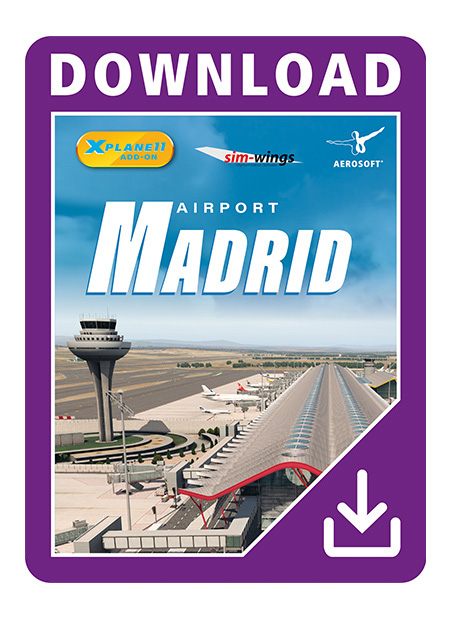





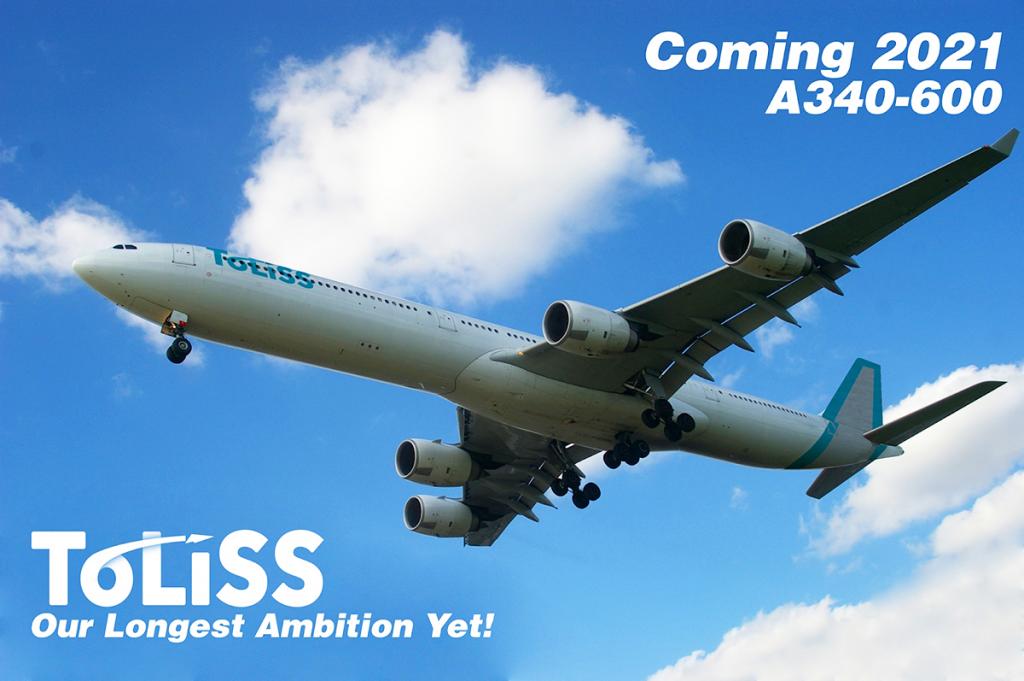











































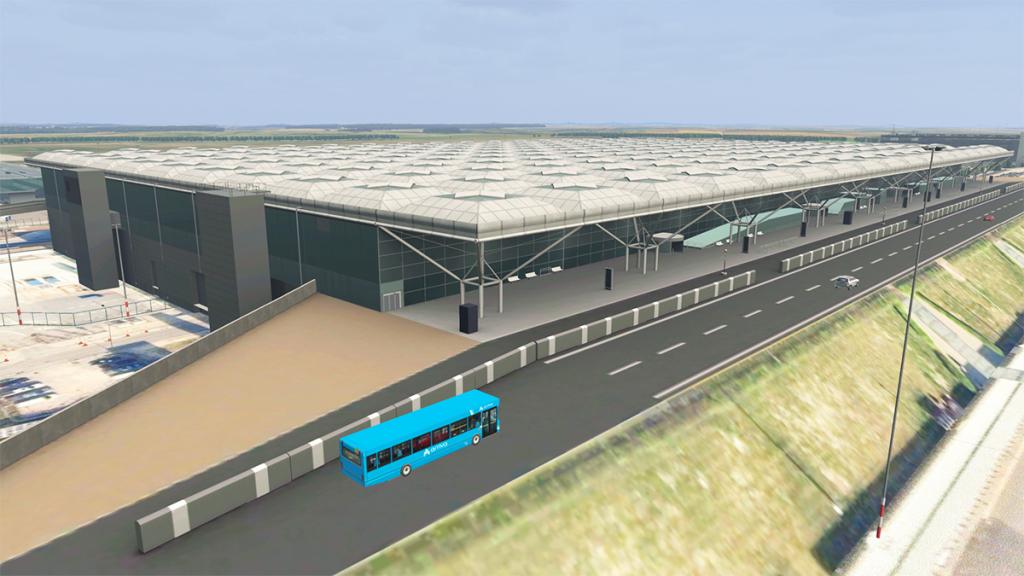























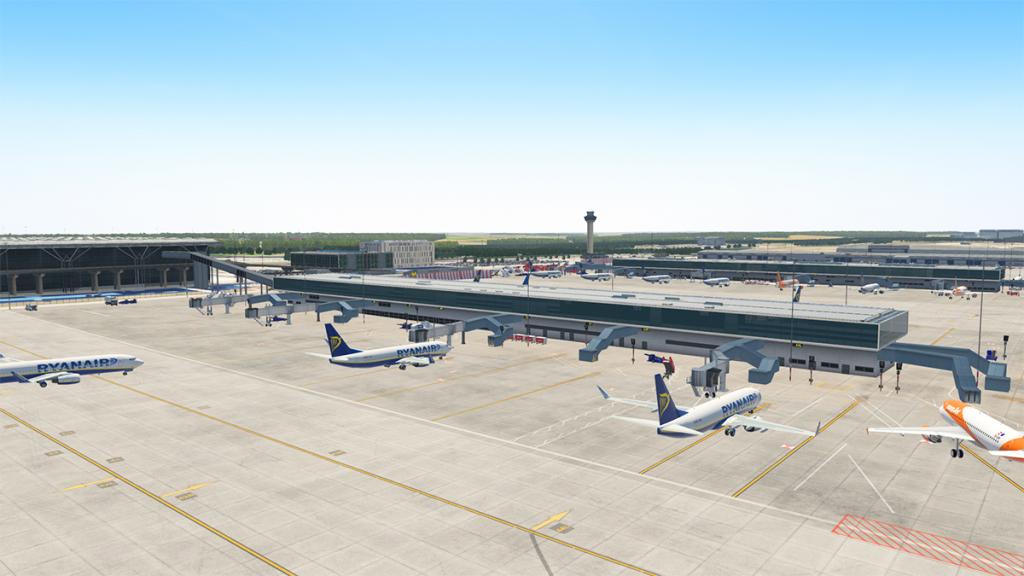



































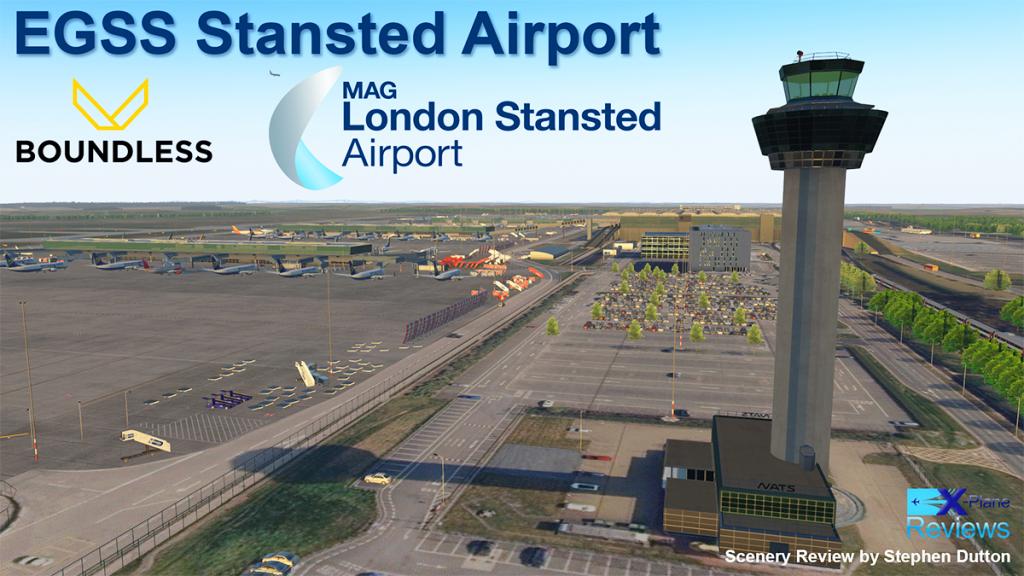

































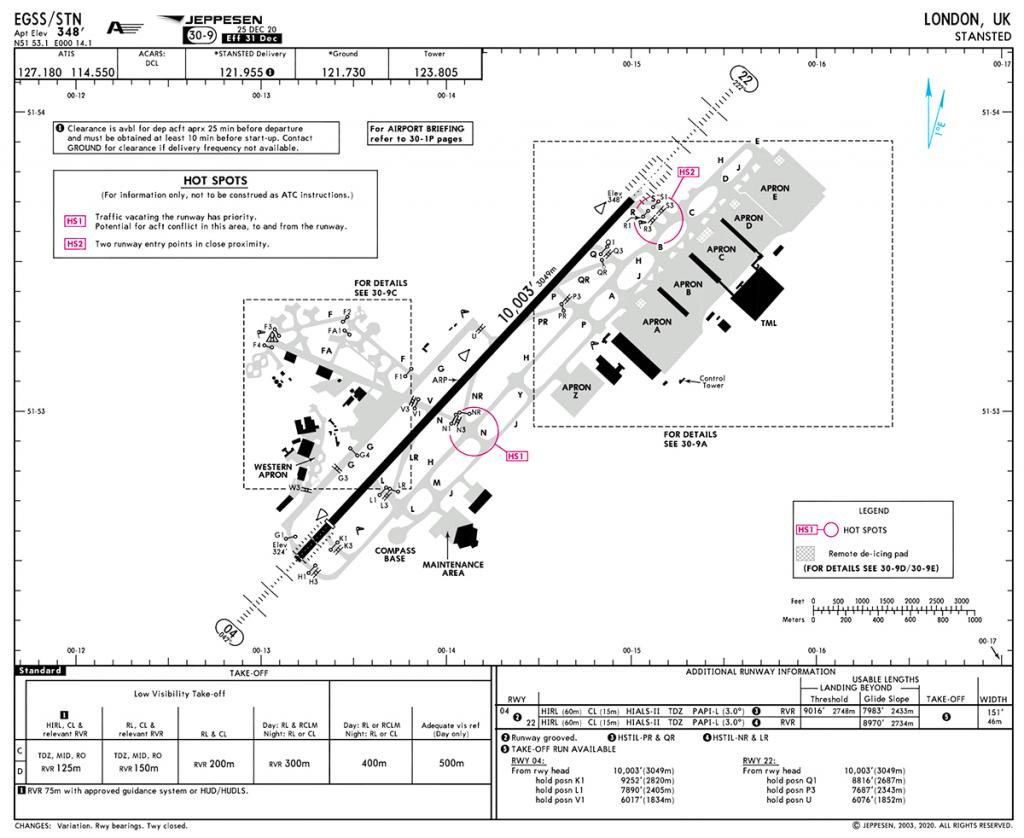

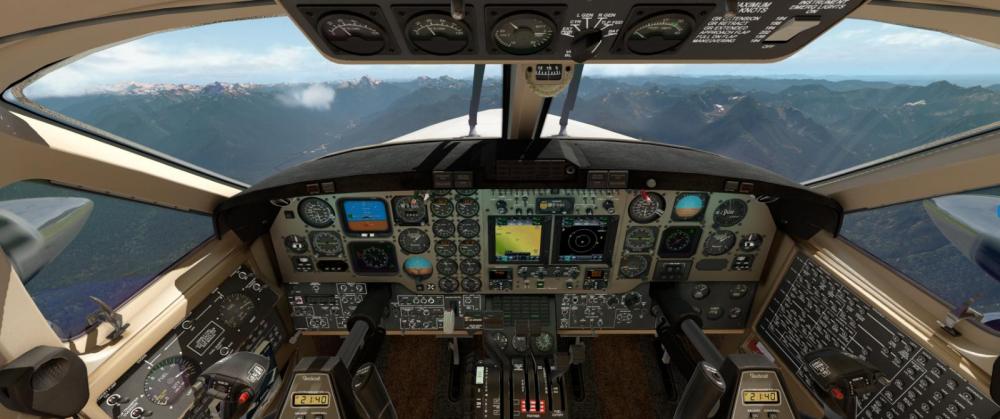
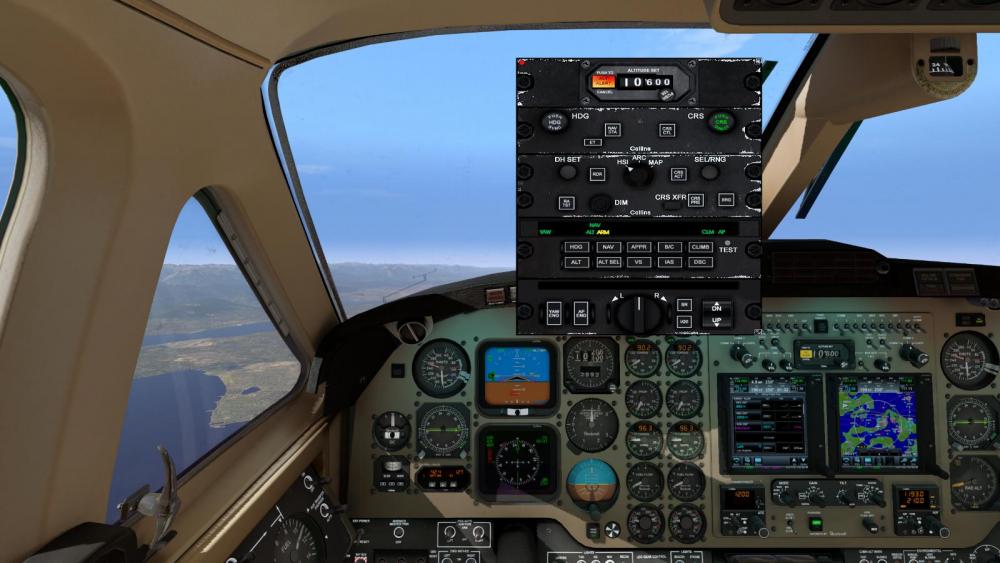
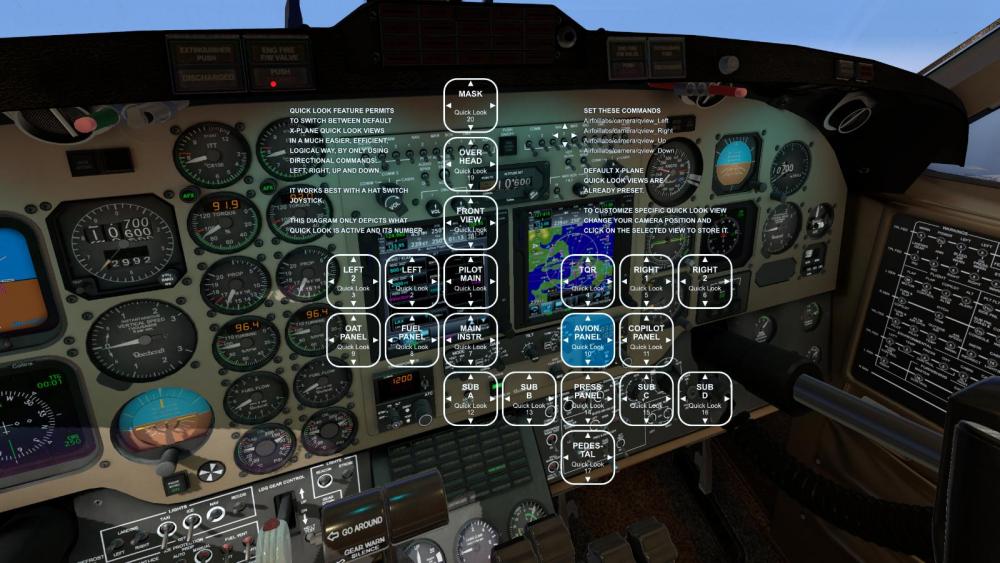






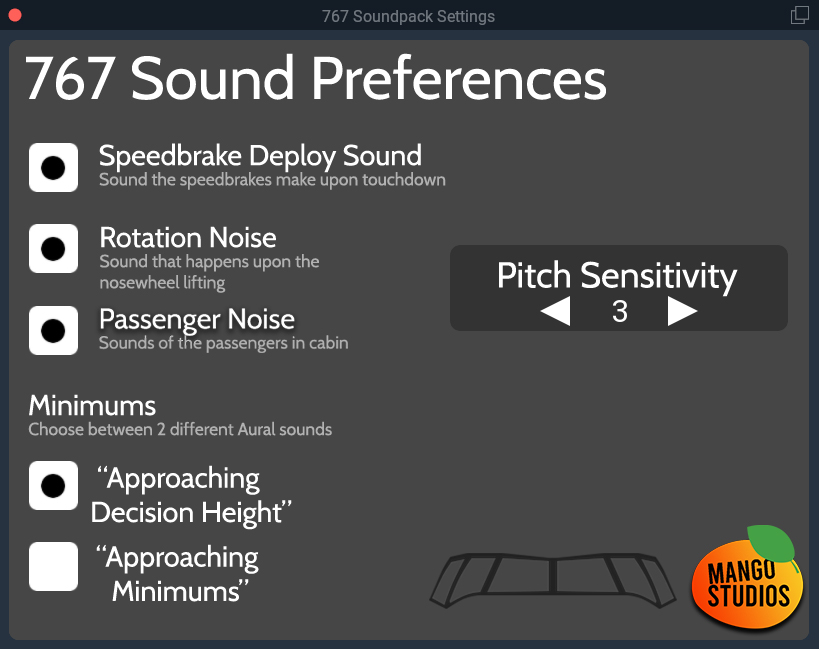








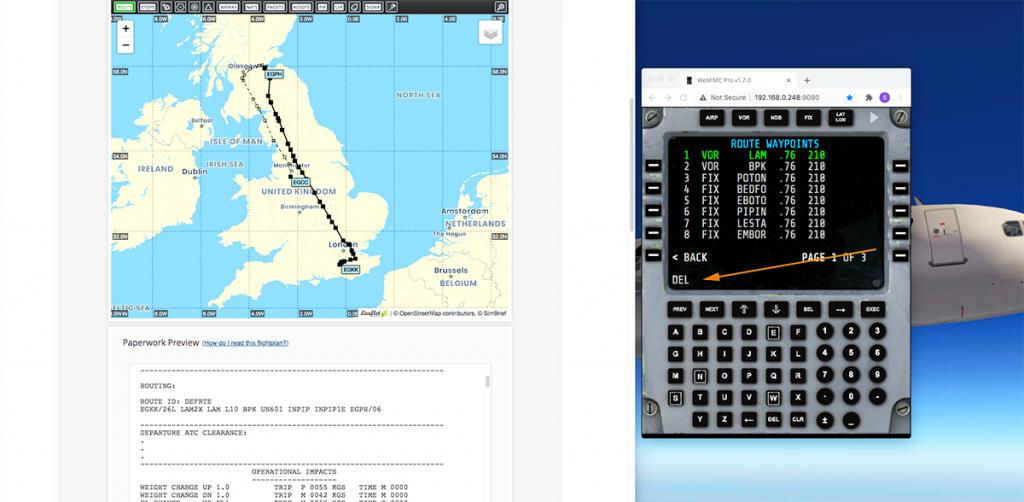















.thumb.jpg.2b1cc4edff7bbf6ed4646951f652130e.jpg)
.thumb.jpg.5f9baffd469f8fa047fc0a82e4799849.jpg)
.thumb.jpg.fd34d1607e53717727d8c9b903d595d1.jpg)
.thumb.jpg.3c02479acba35cc860403dda3fc8eff2.jpg)
.thumb.jpg.a1421f7a832d8355ab35bec096fcface.jpg)
.thumb.jpg.b6a0517a053776ba1b2fa48a0477bded.jpg)
.thumb.jpg.00e22792c57e57c3a4c89ee7ec4adf88.jpg)
.thumb.png.874aa8256513192e43e7db12bcdd43d8.png)
.thumb.jpg.ef70f74a9ae0a072cc84522c4b3922e5.jpg)
.thumb.jpg.244a5f27c7b5032f3fe835a80a3413b0.jpg)
.thumb.jpg.dd928a4aca6c2daad6d4c690c51e6eb2.jpg)
.thumb.jpg.0b5eaca7817065e726ca651312934032.jpg)
.thumb.jpg.30e44fa1600667c2e6e80c26b31e5335.jpg)
.thumb.jpg.5a11e41ec7cfecaeab714b4242c94be3.jpg)
.thumb.jpg.b5f2c2ad5c3f19b9e96729767bdbde4a.jpg)
.thumb.jpg.1933a33ec395770c3832ad9ab77d71a8.jpg)
.thumb.jpg.3c02727f515d70cadb73f453e1730b9a.jpg)
.thumb.jpg.b58e20470cc38593129a5f941ef04868.jpg)
.thumb.jpg.5848b41488b1e3b1037fd5df71506aeb.jpg)
.thumb.jpg.a5f17a86d4ec0a6023052796451049f5.jpg)
.thumb.jpg.031100f30452a09b470b11b048a81a93.jpg)
.thumb.jpg.34f5c0c3134908fd0cbe196510a05ca4.jpg)
.thumb.jpg.f3ece5f8088eeb08f63714913b6a9b82.jpg)
.thumb.jpg.5163c22f115a313e6a0d7fcab927e643.jpg)
.thumb.jpg.9fcd98b917f95bf1ccf3ce68176c0fdd.jpg)
.thumb.jpg.61a52e245e63ffea6dad3900a4b3d697.jpg)
.thumb.jpg.24375662d61cc138df5bab7f86309812.jpg)
.thumb.jpg.a3b683b84dd0fa60559345db37a05da4.jpg)

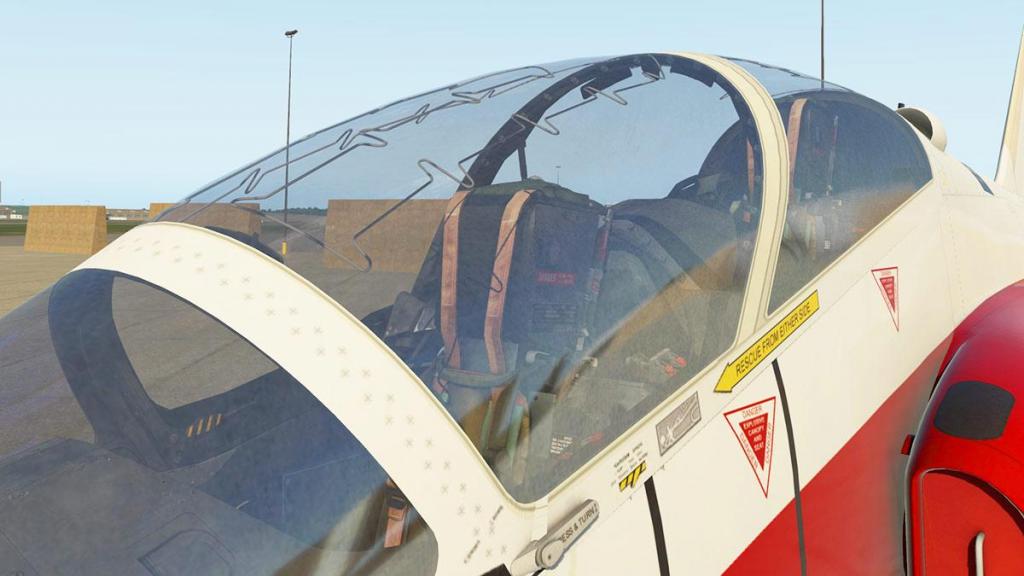
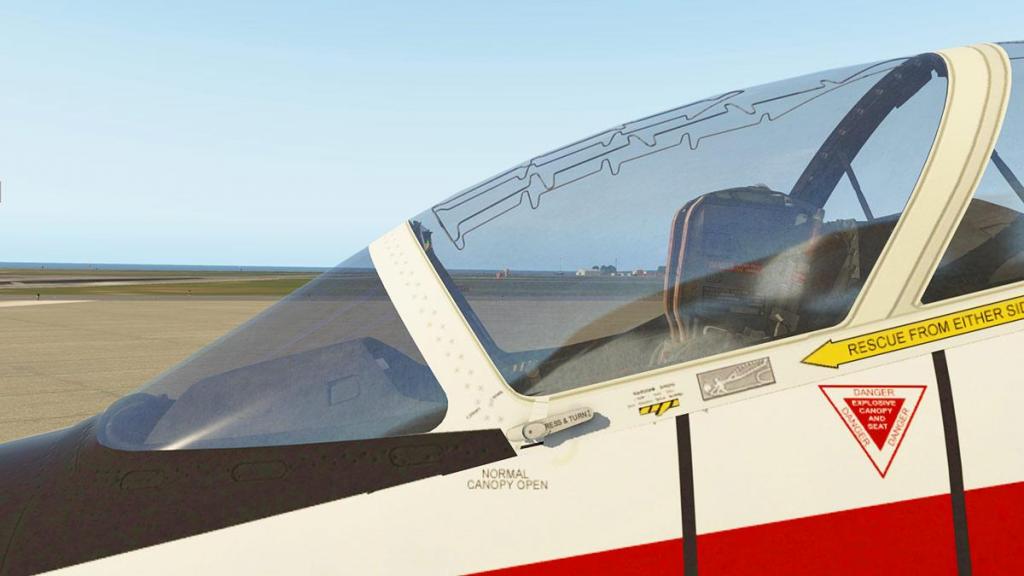



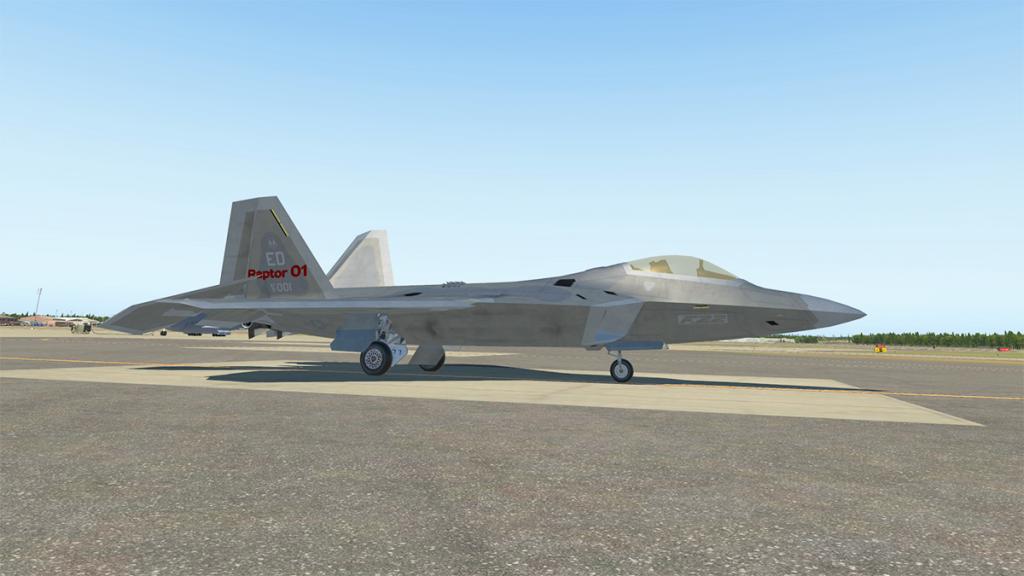













































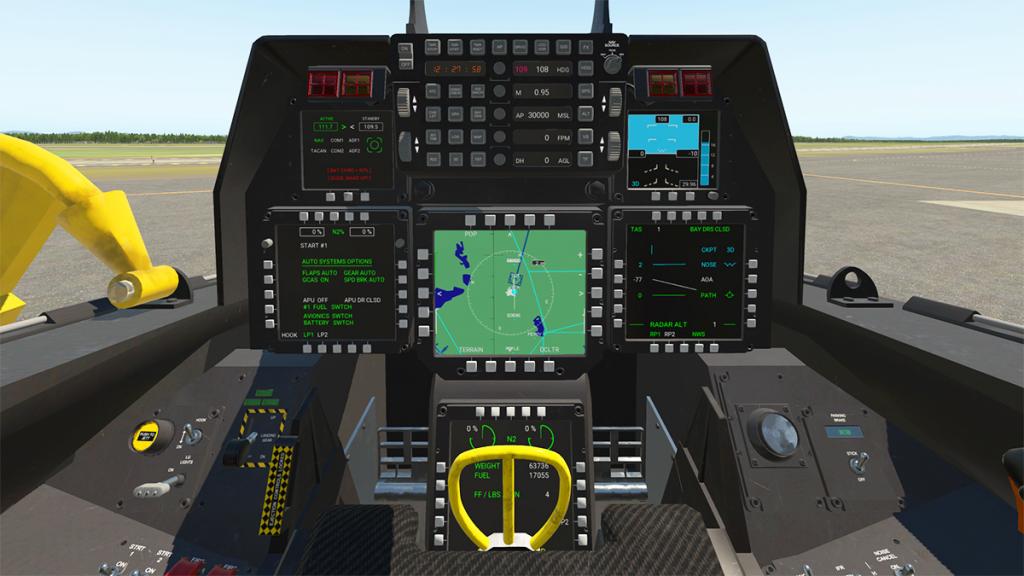



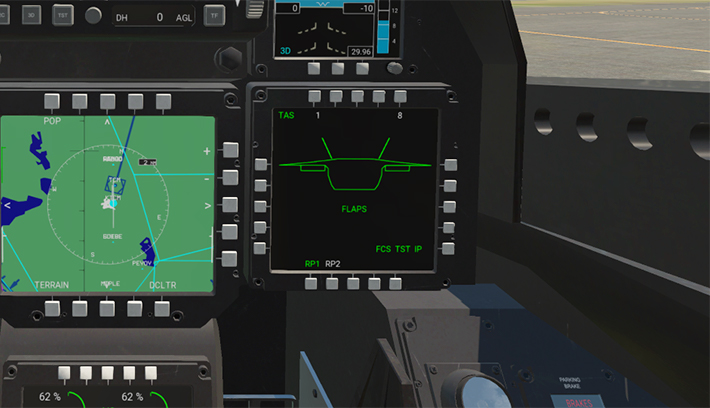
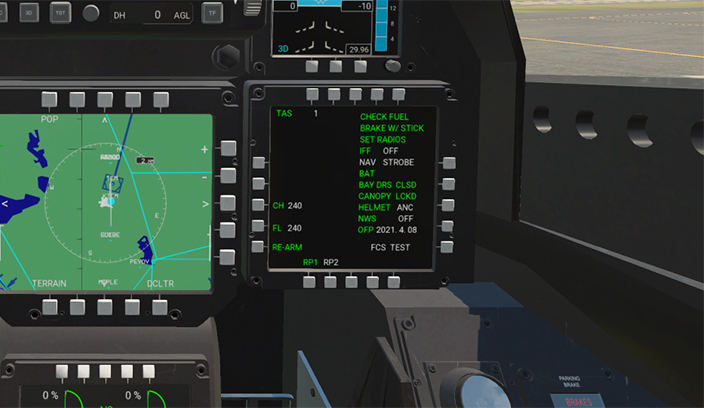
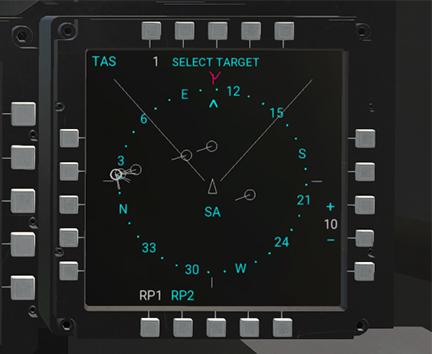






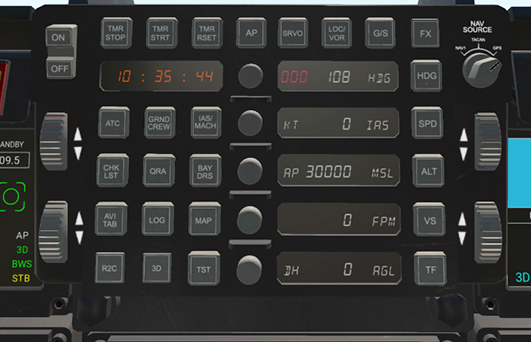


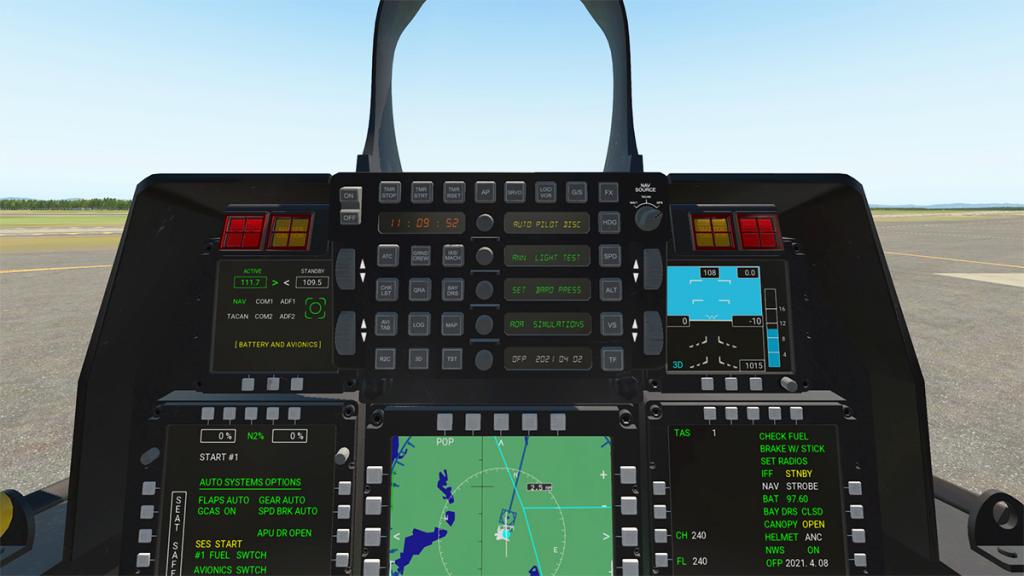



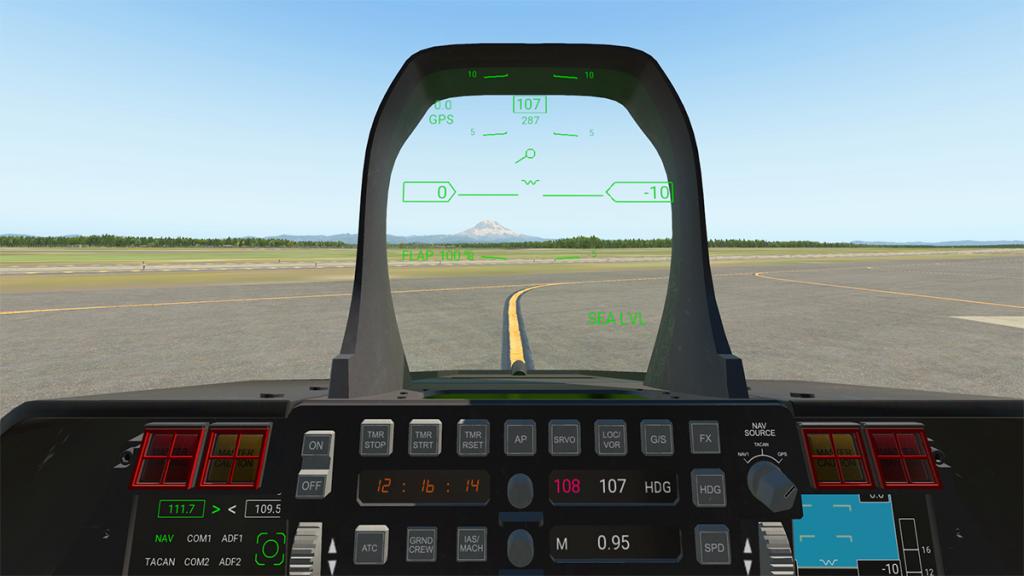




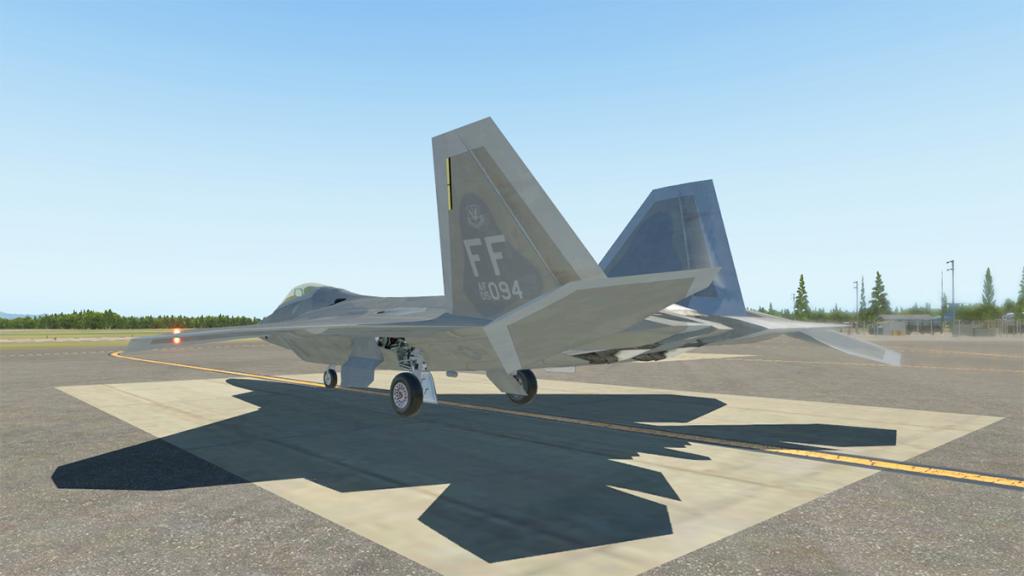






















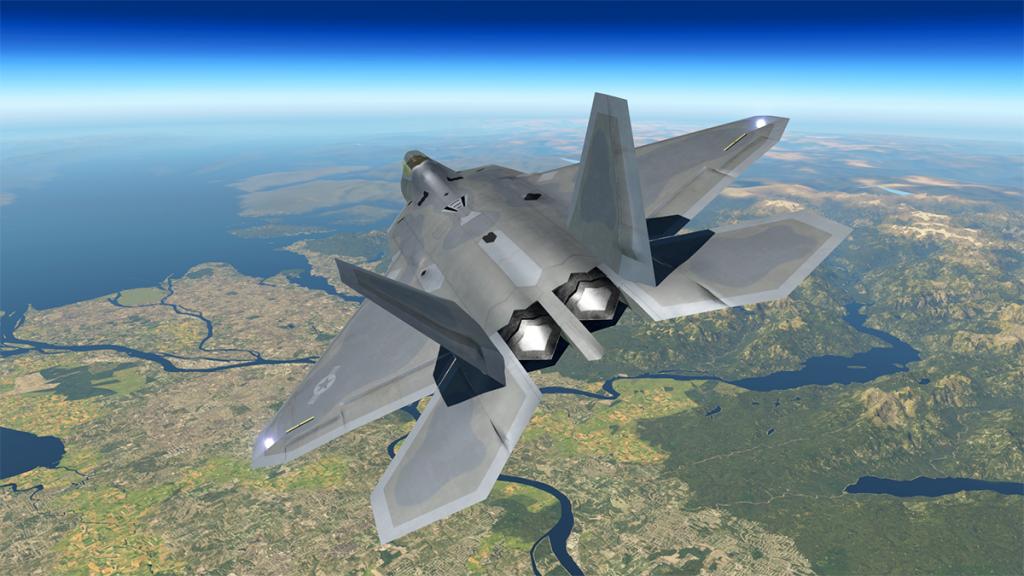




























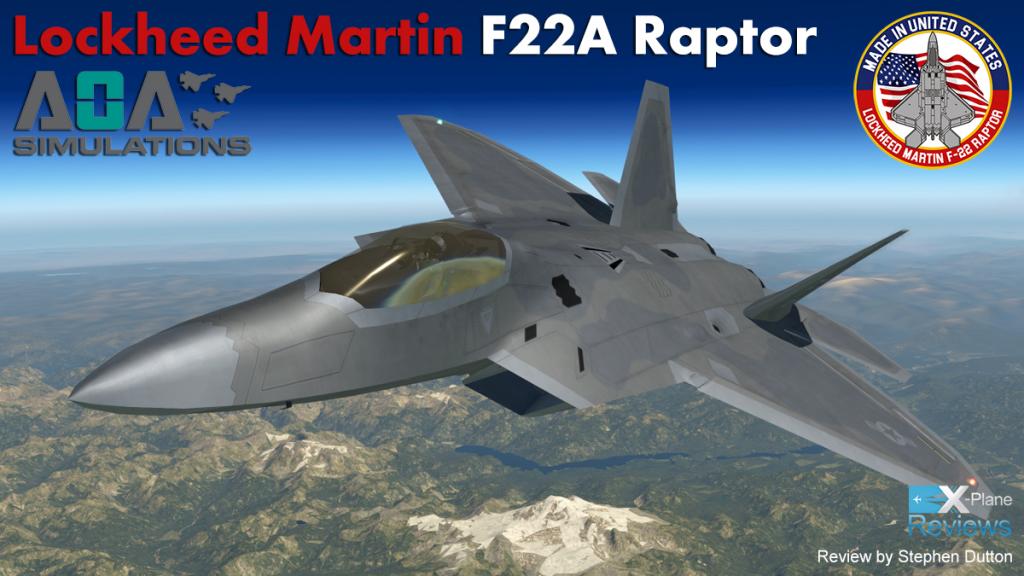






















































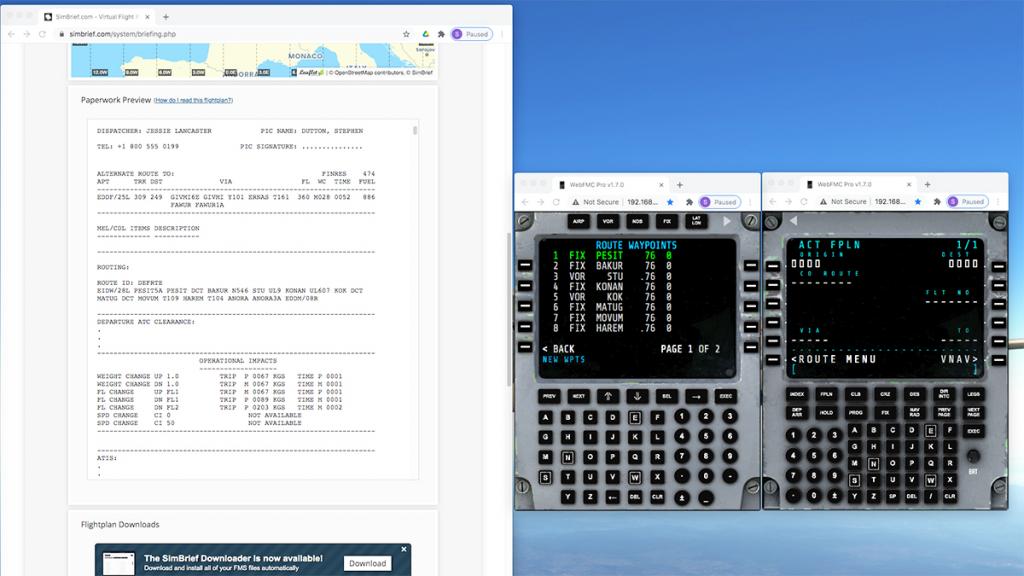



































.thumb.jpg.24c1675fb2d11544fee35fbe7de16df0.jpg)
.thumb.jpg.86c044d00bec0257dc092b76d41c0154.jpg)
.thumb.jpg.a5d9b1bf15643a1cda7abab9836476ca.jpg)
.thumb.jpg.51cf48beec952f81dce293804a189fe5.jpg)
.thumb.jpg.377dce0b2186791d3d7f054f1f2130c6.jpg)
.thumb.jpg.4a8adf06030d0057010d44832eae73b9.jpg)
.thumb.jpg.8aff205370942e11ea73cd495953a736.jpg)
.thumb.jpg.d093c4fa92dff99c4b64c5ea17456f6f.jpg)
.thumb.jpg.1d7c7f3245e6fb21d2a0b98e72590b07.jpg)
.thumb.jpg.2ebe154e8733192d78db5fa95a3dd74f.jpg)
.thumb.jpg.15dfee662b89b3d3847e7eeb65a891f3.jpg)
.thumb.jpg.75c3d31368d8951c411a100642fde0ec.jpg)





